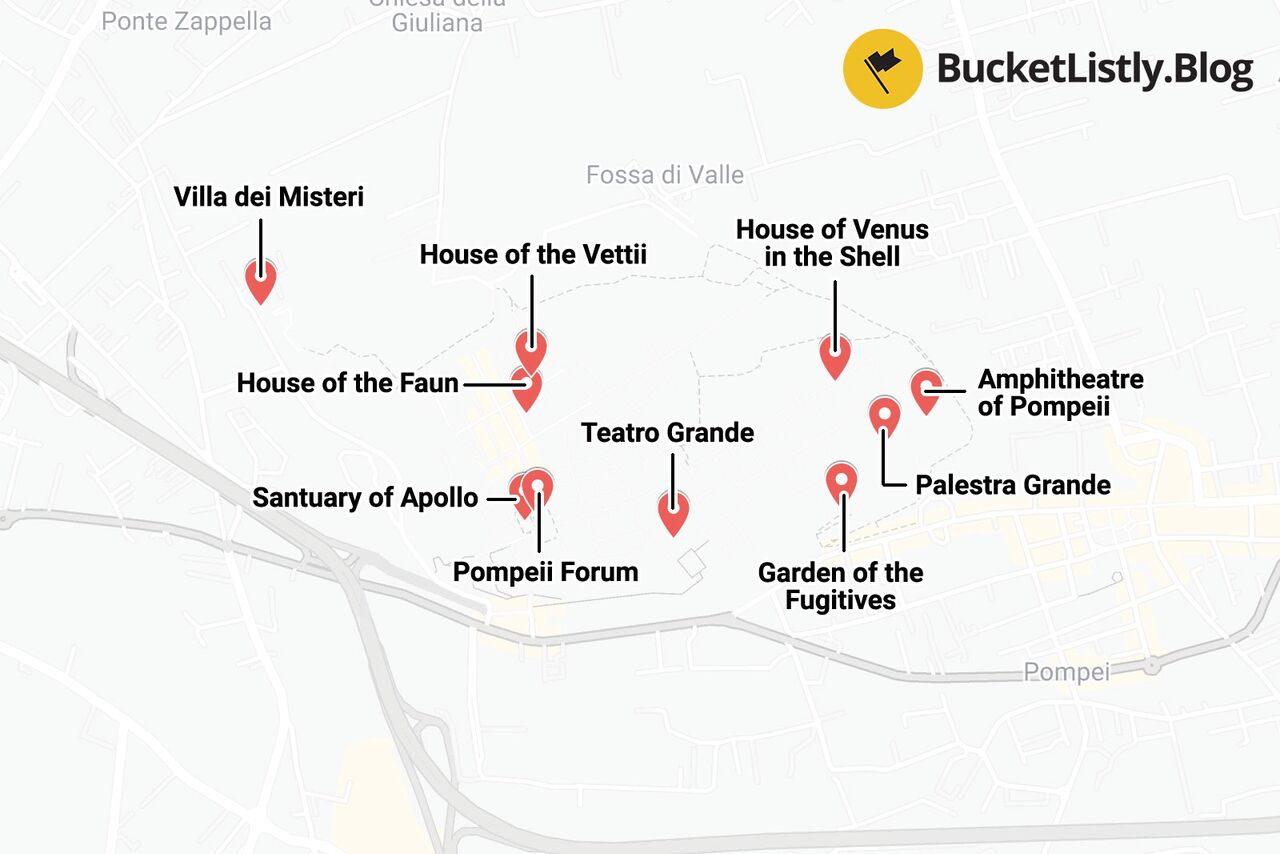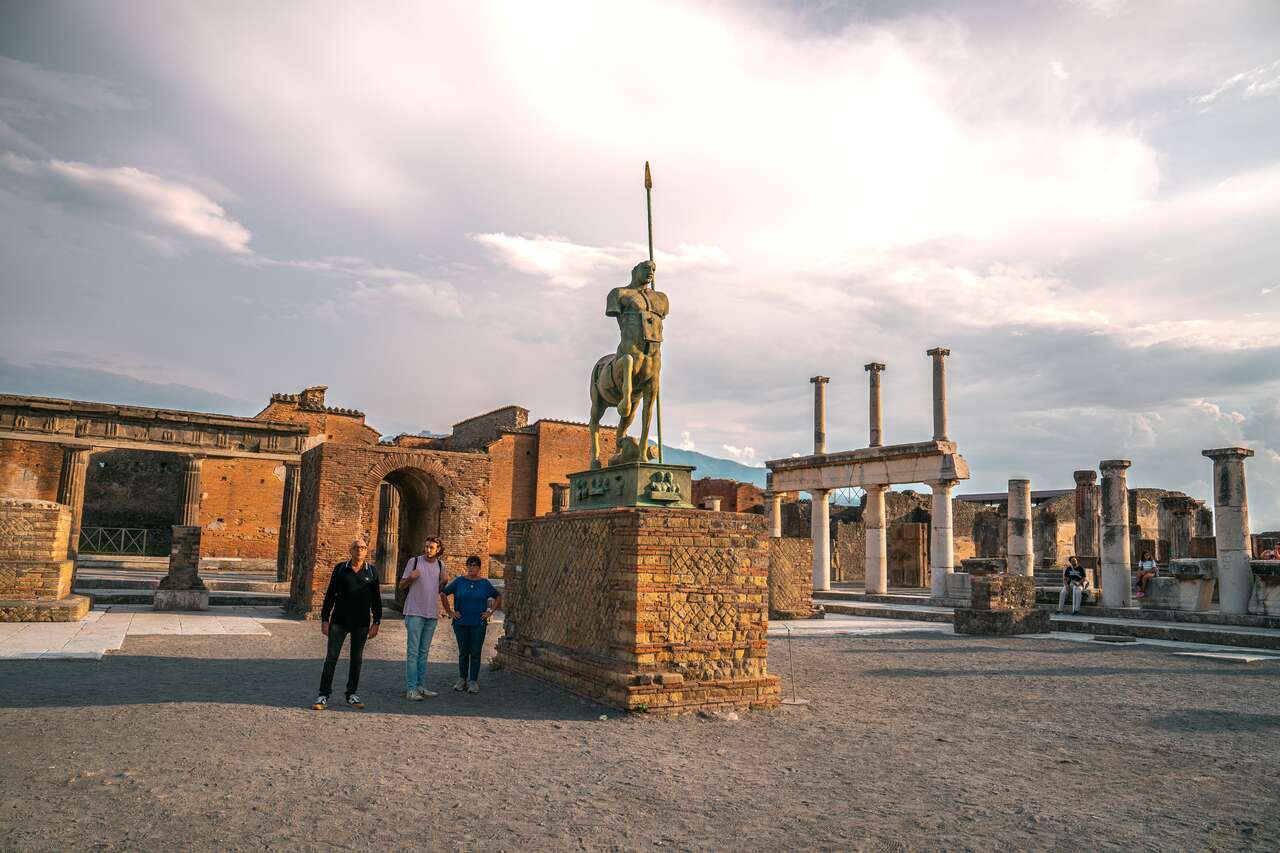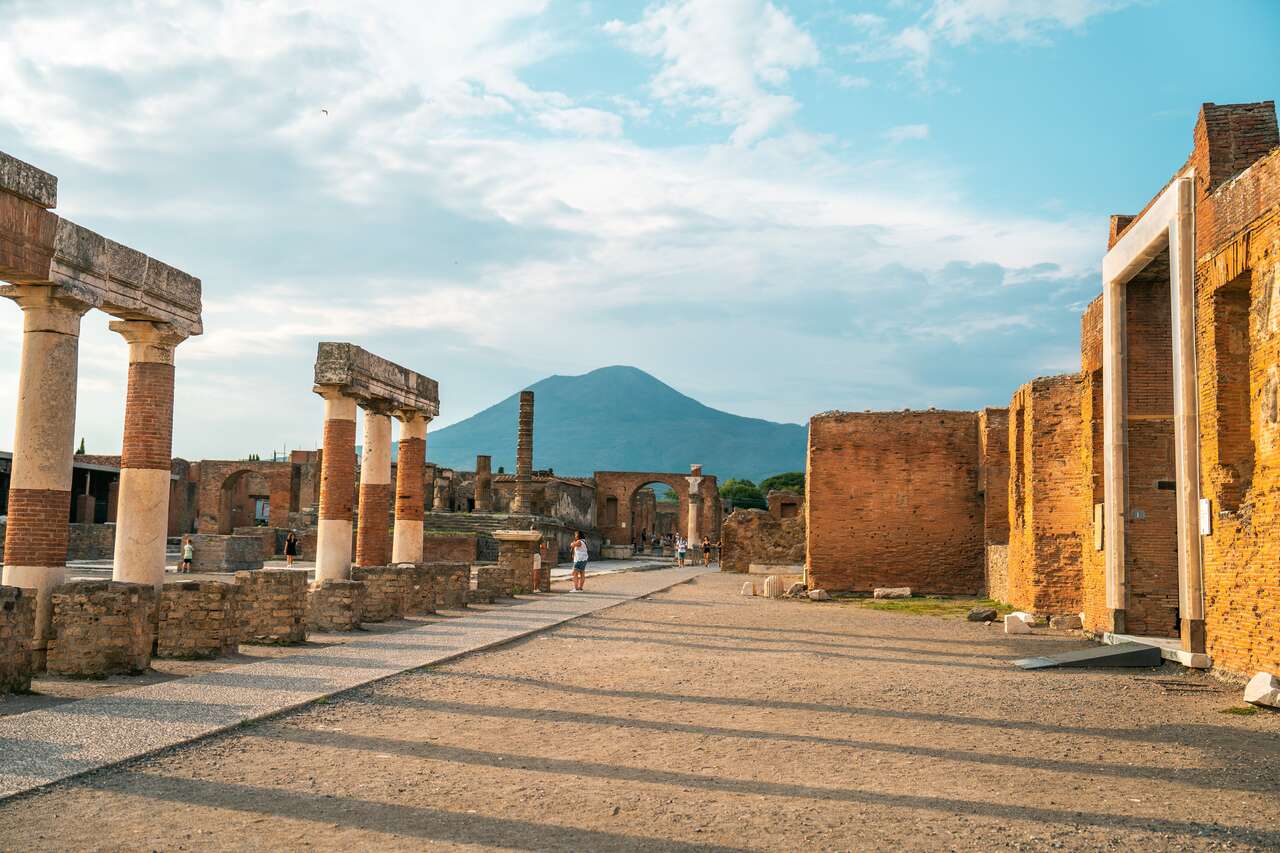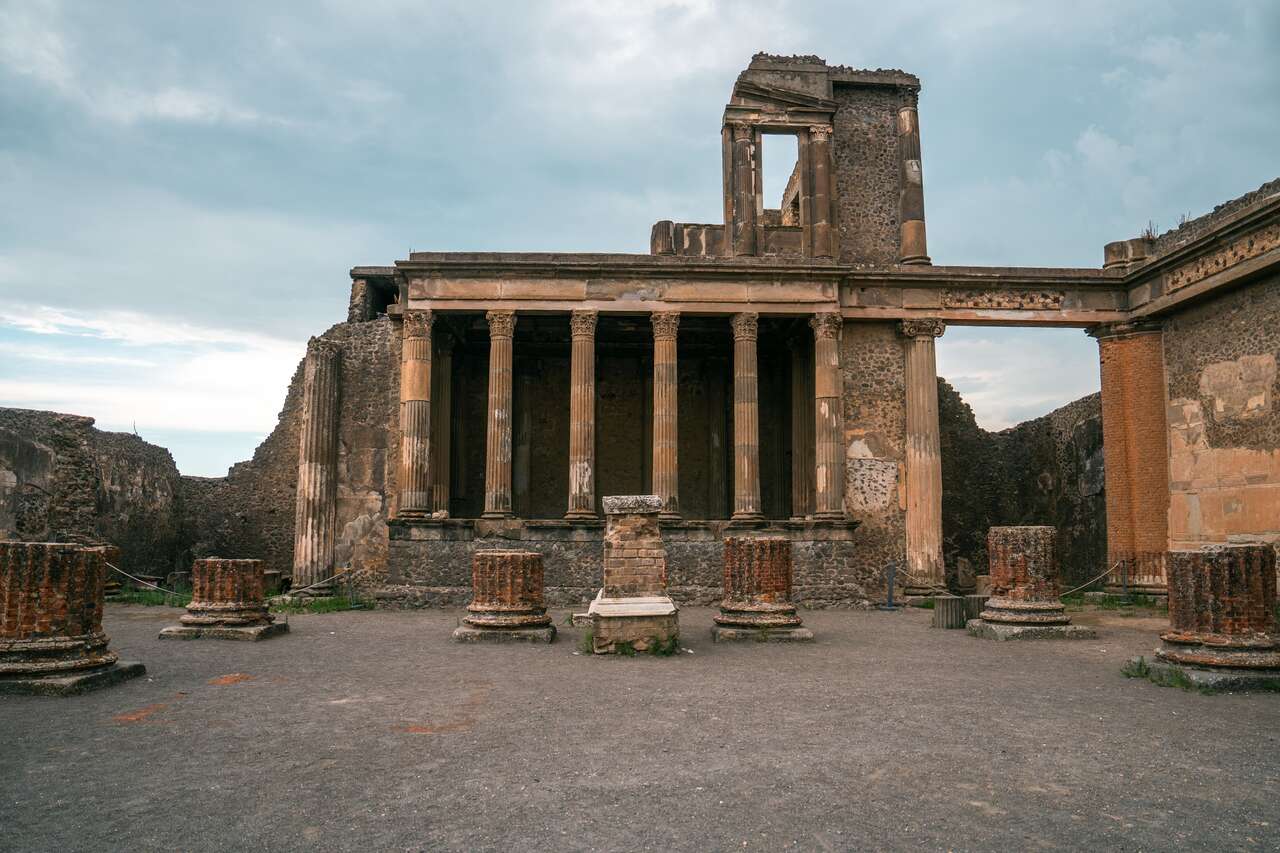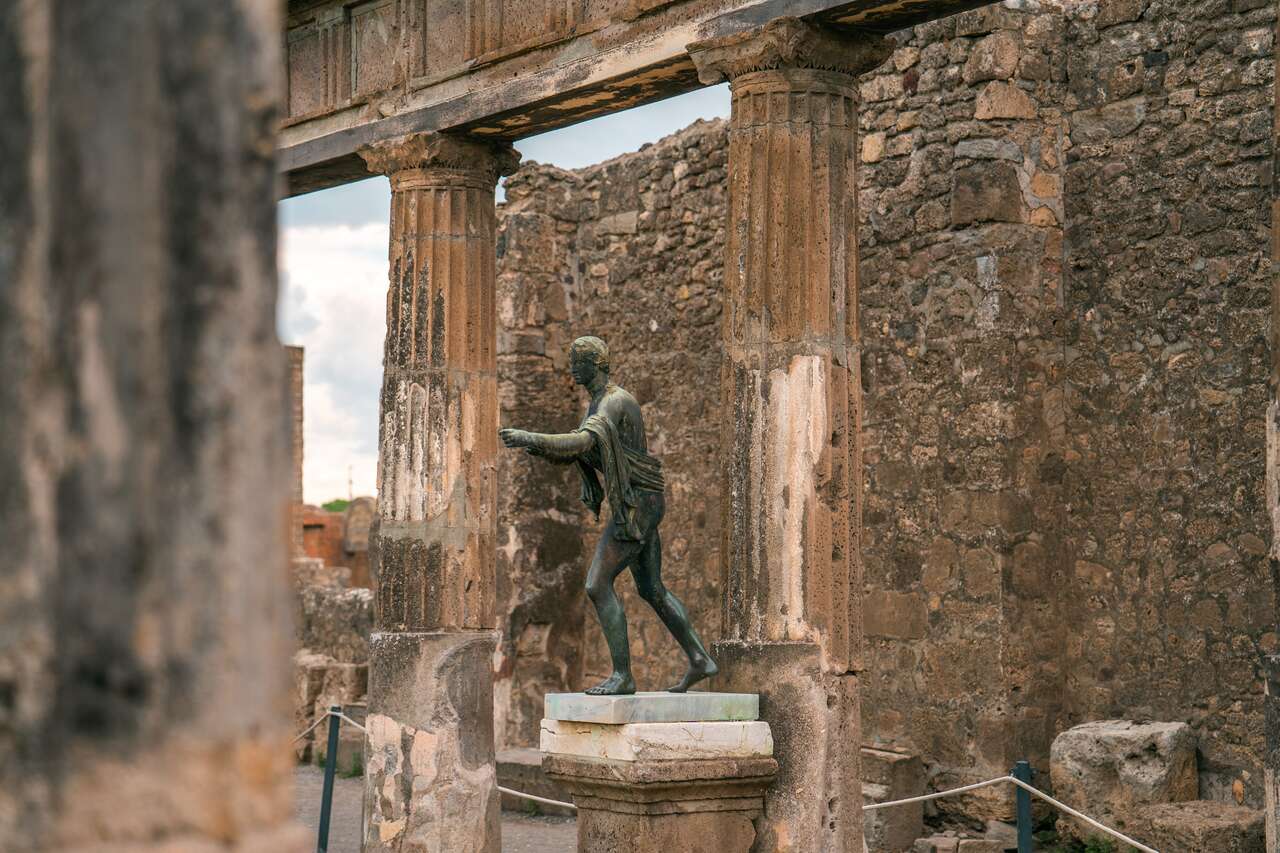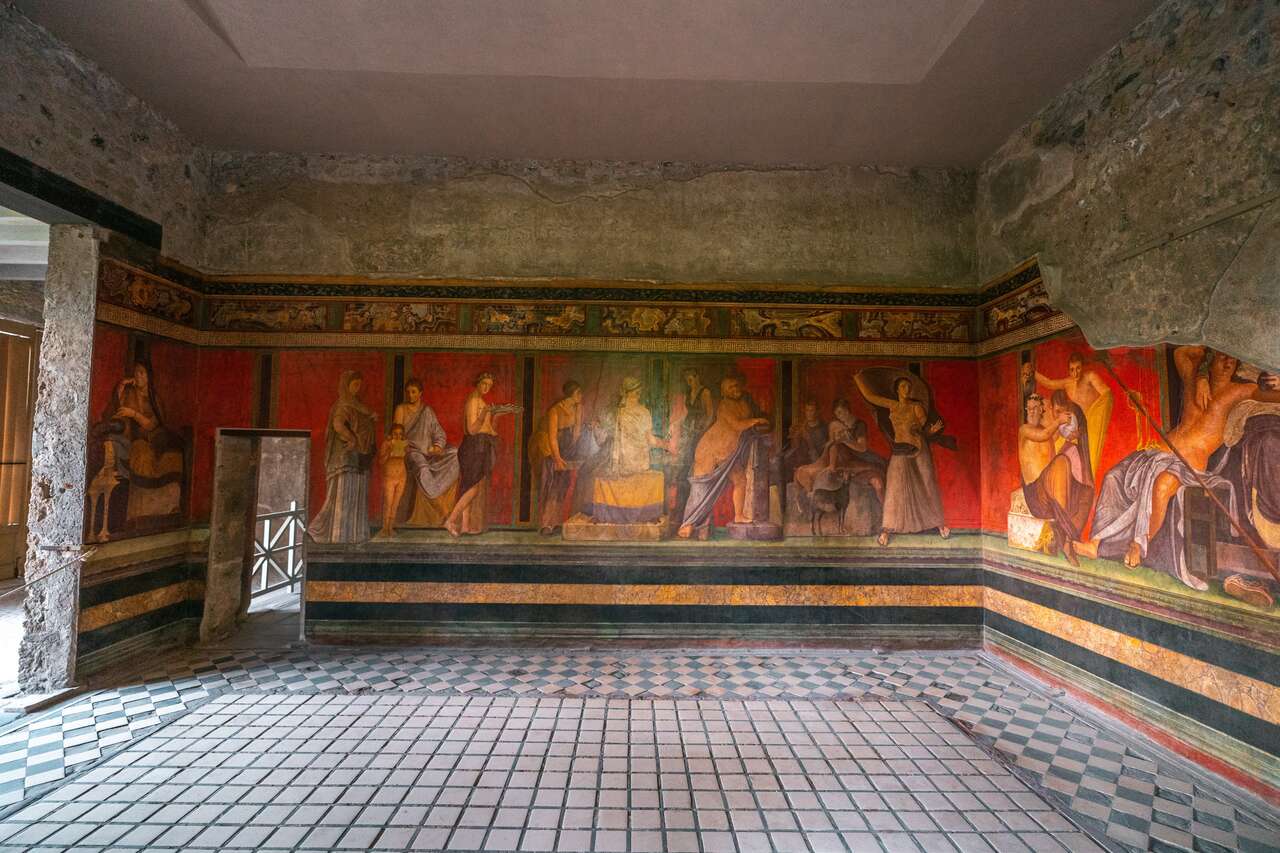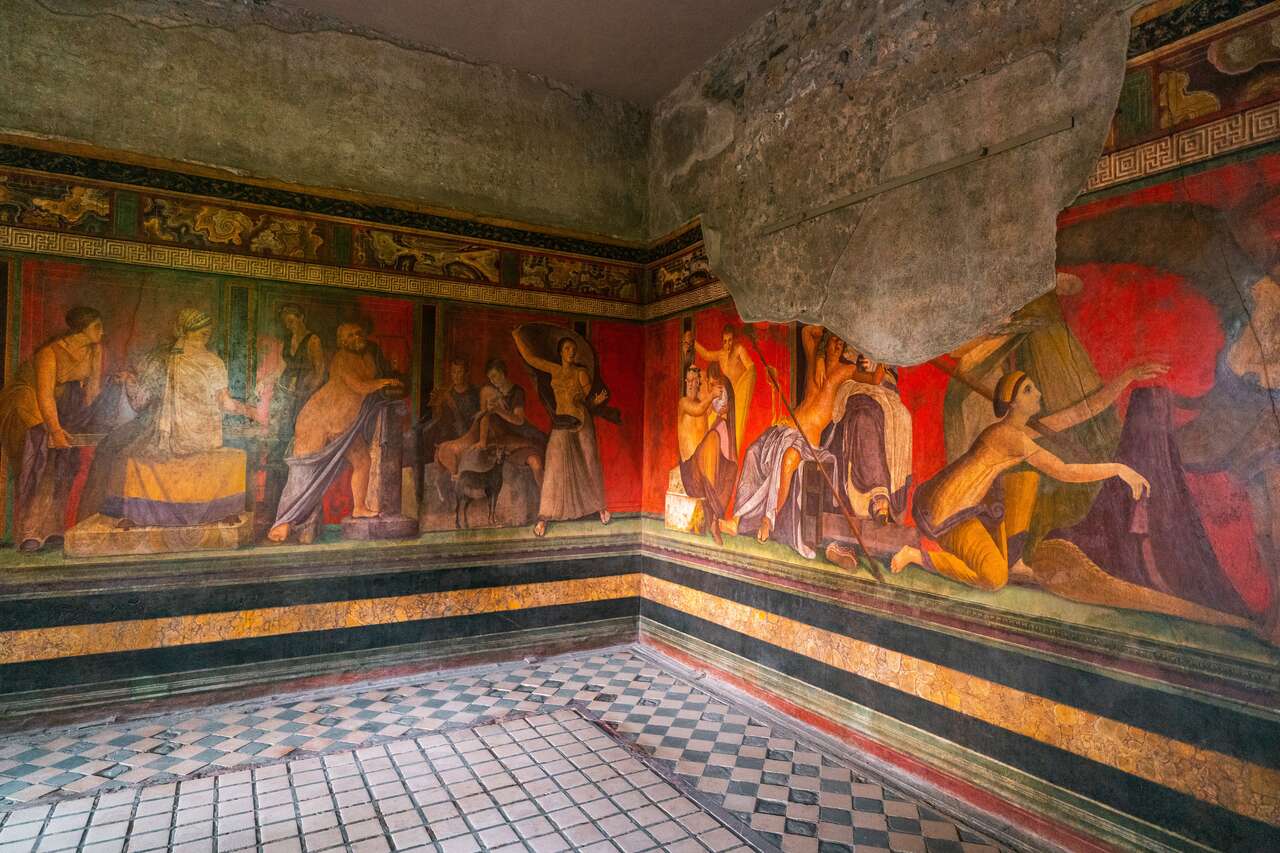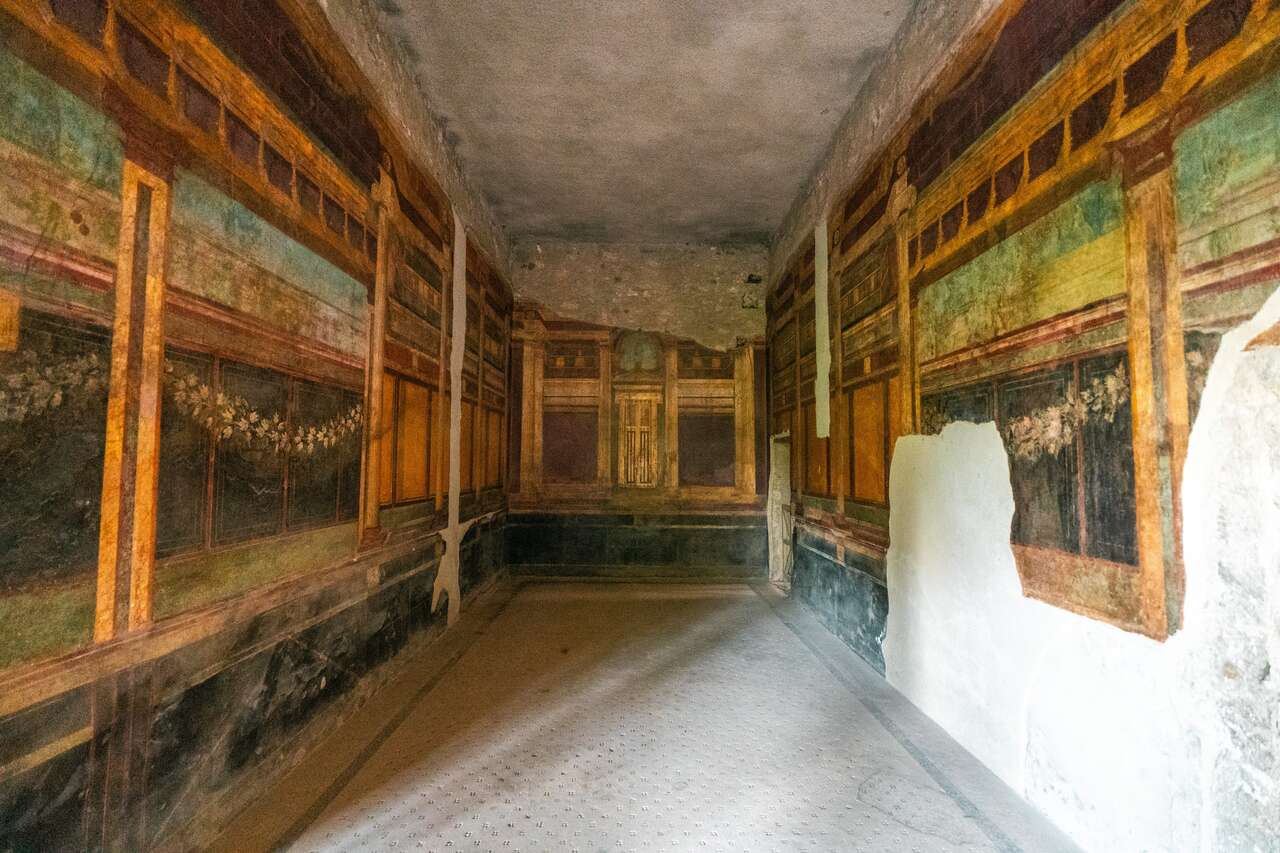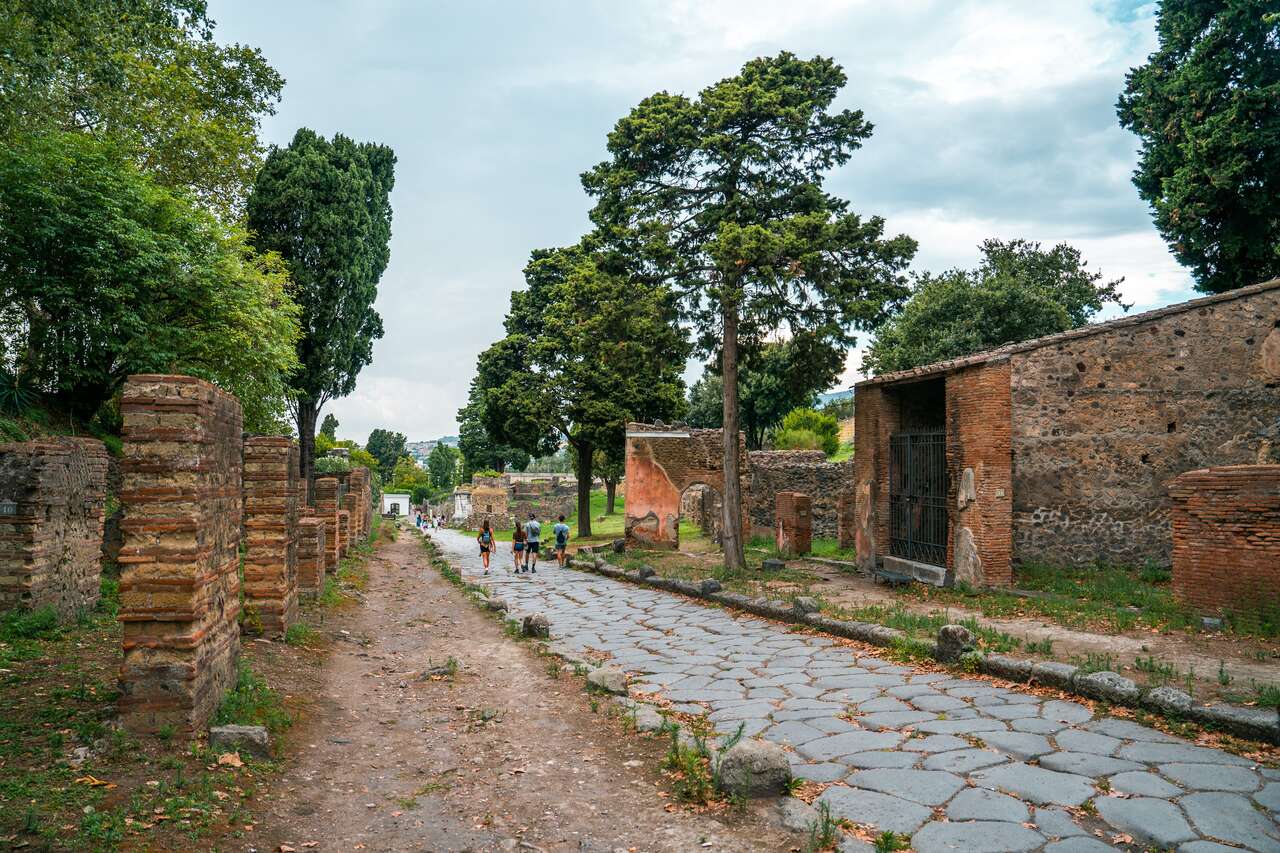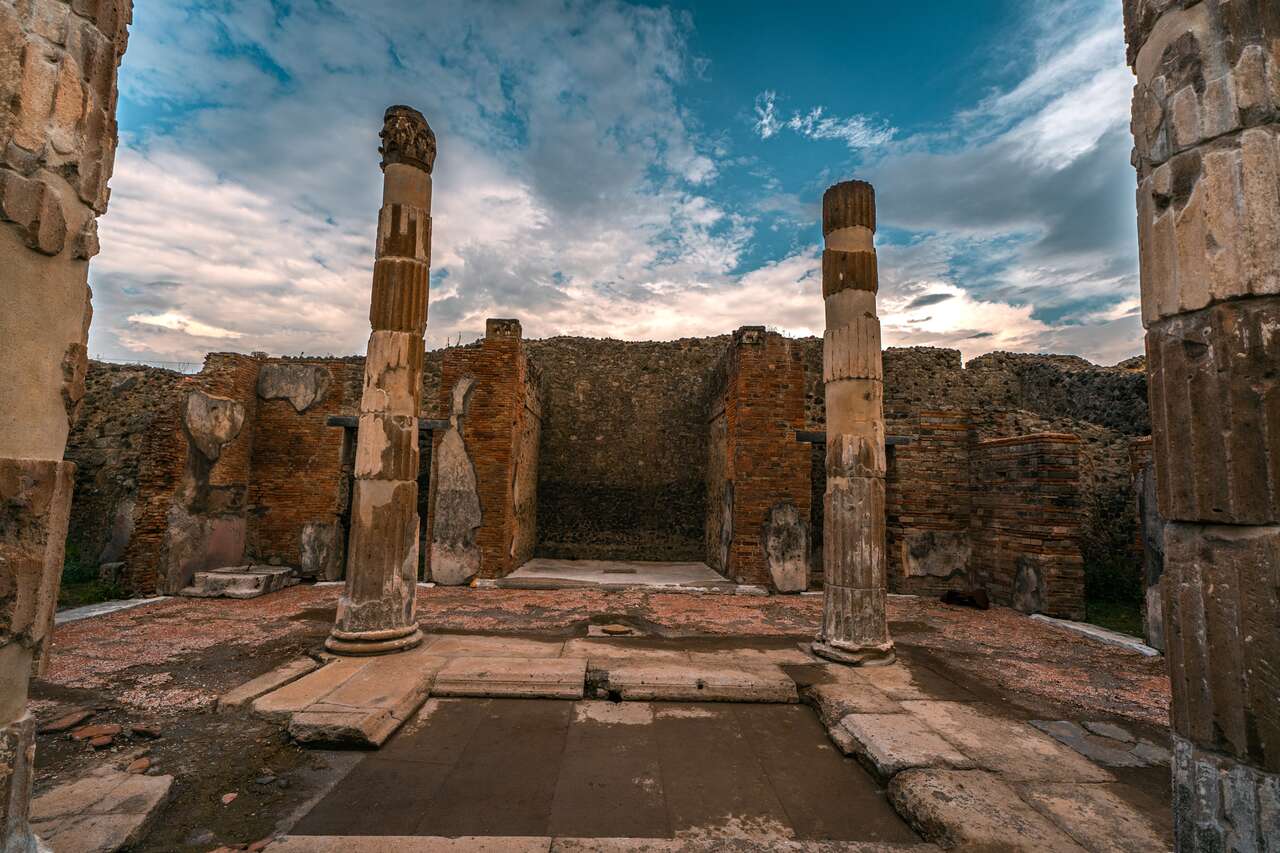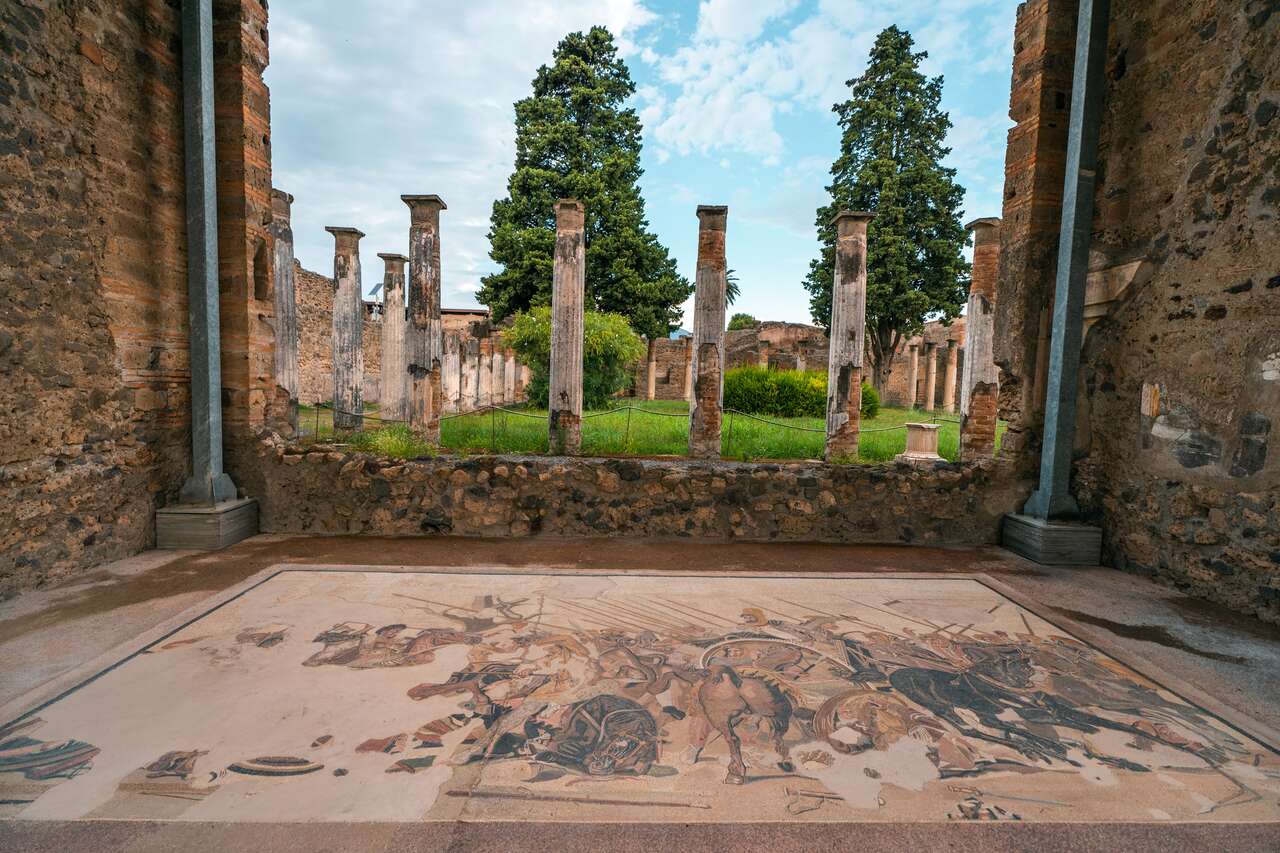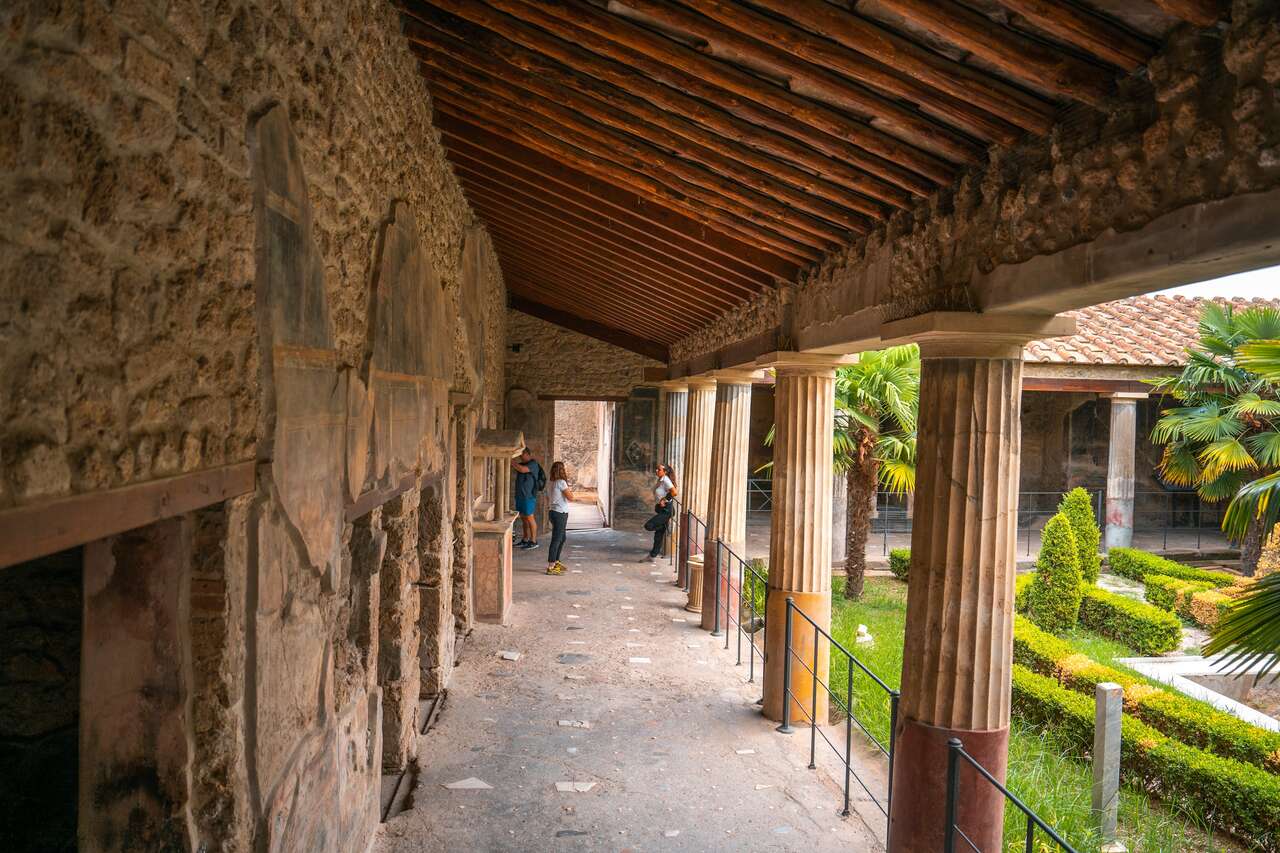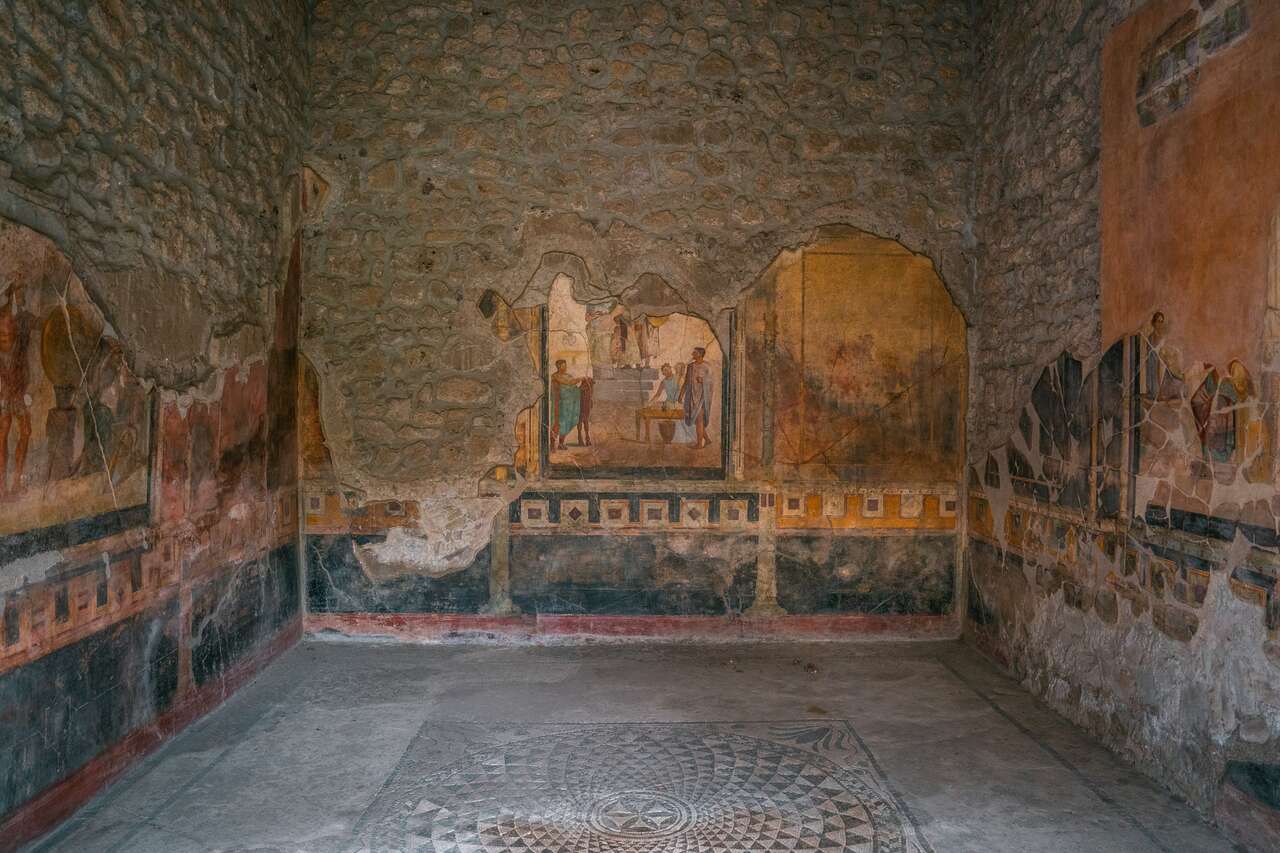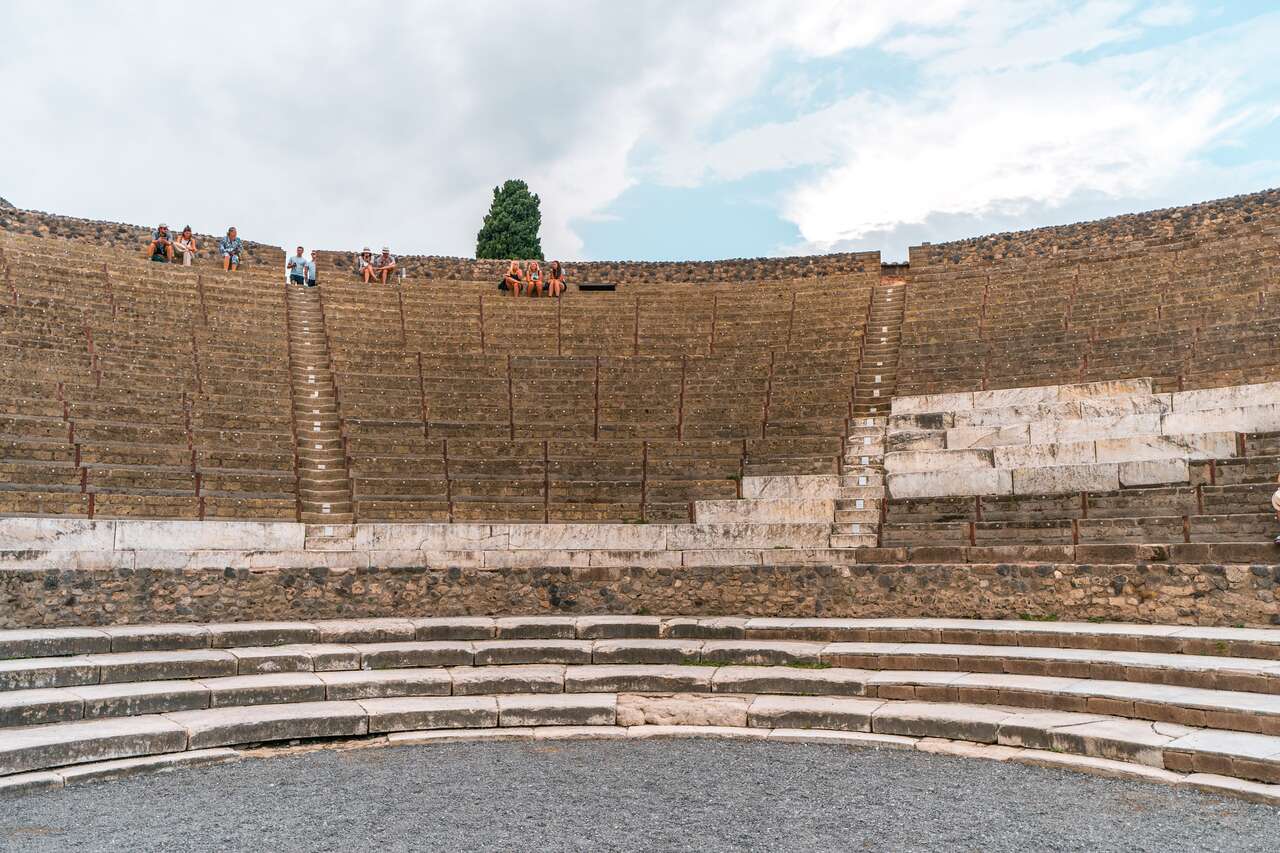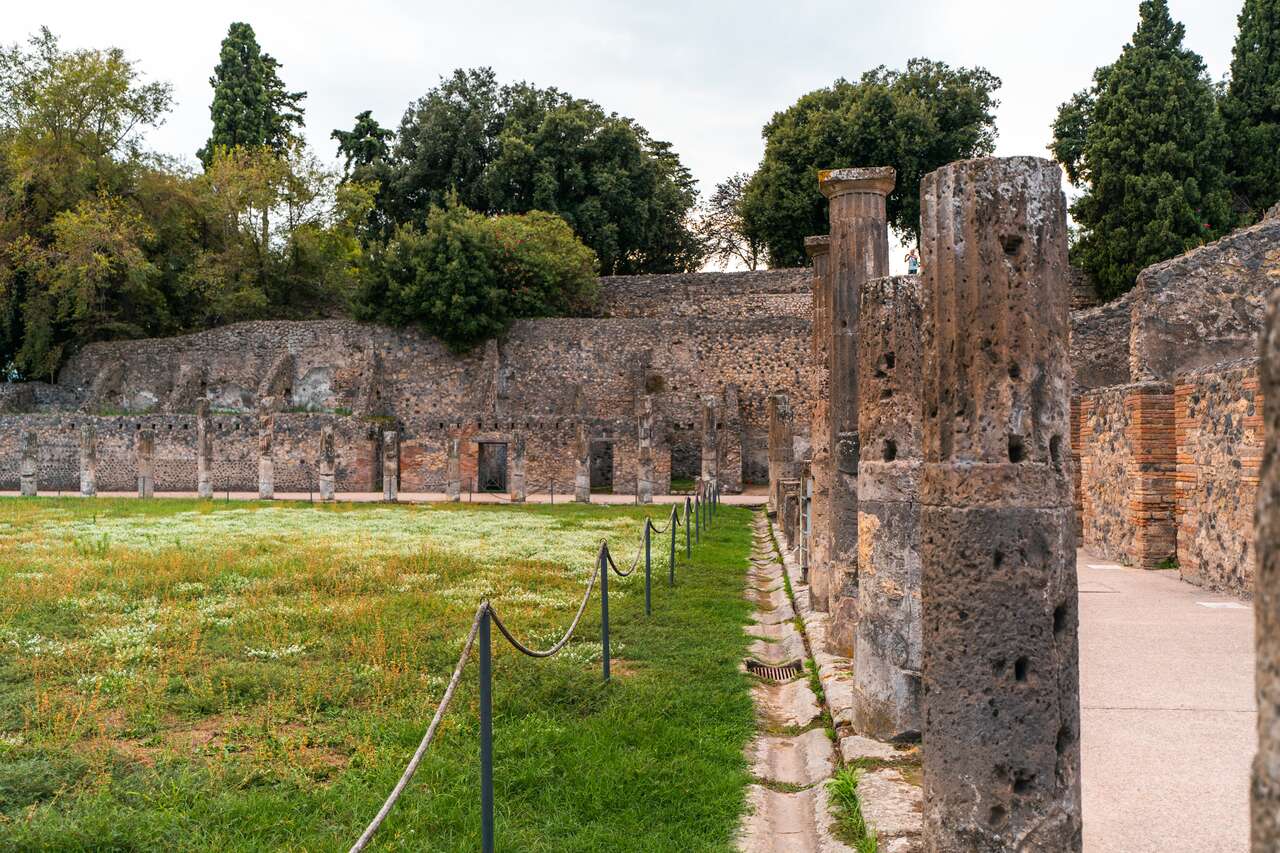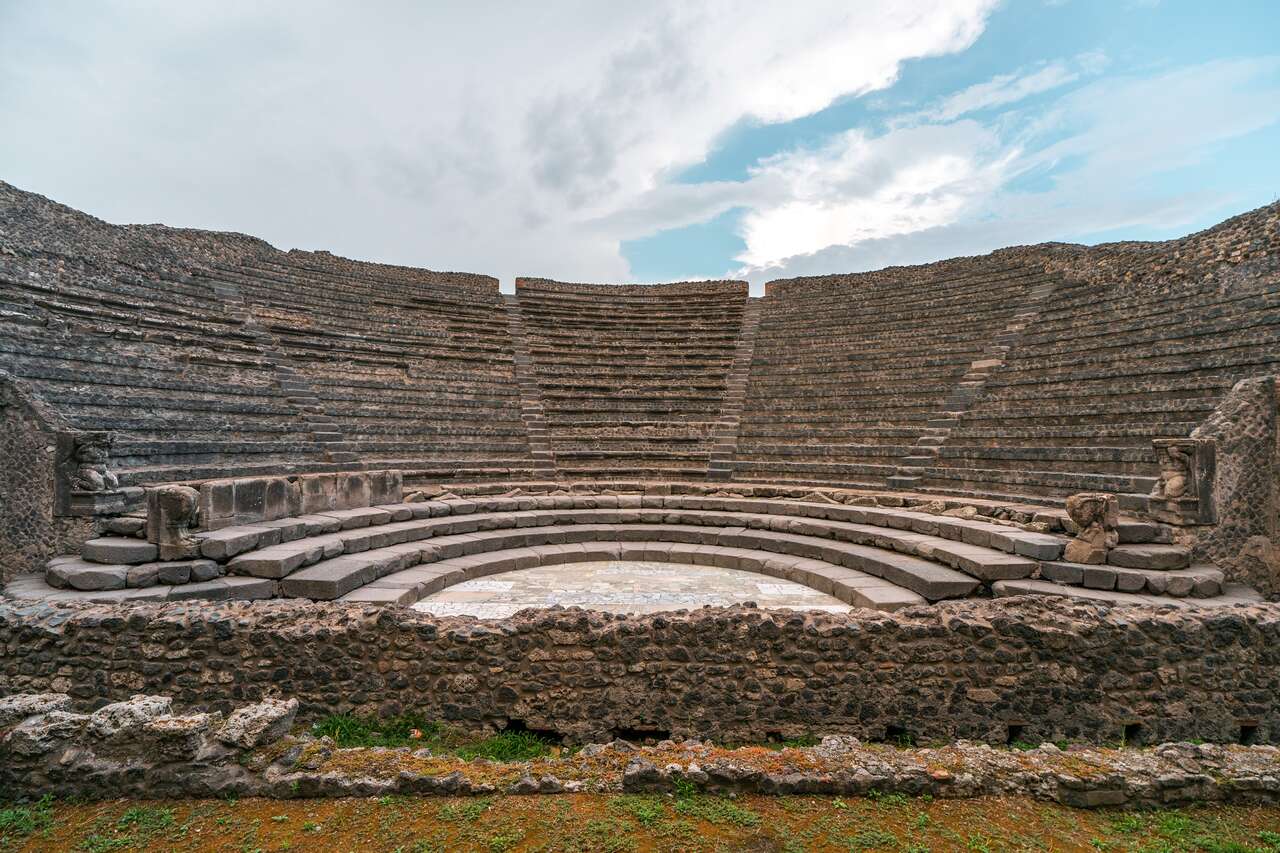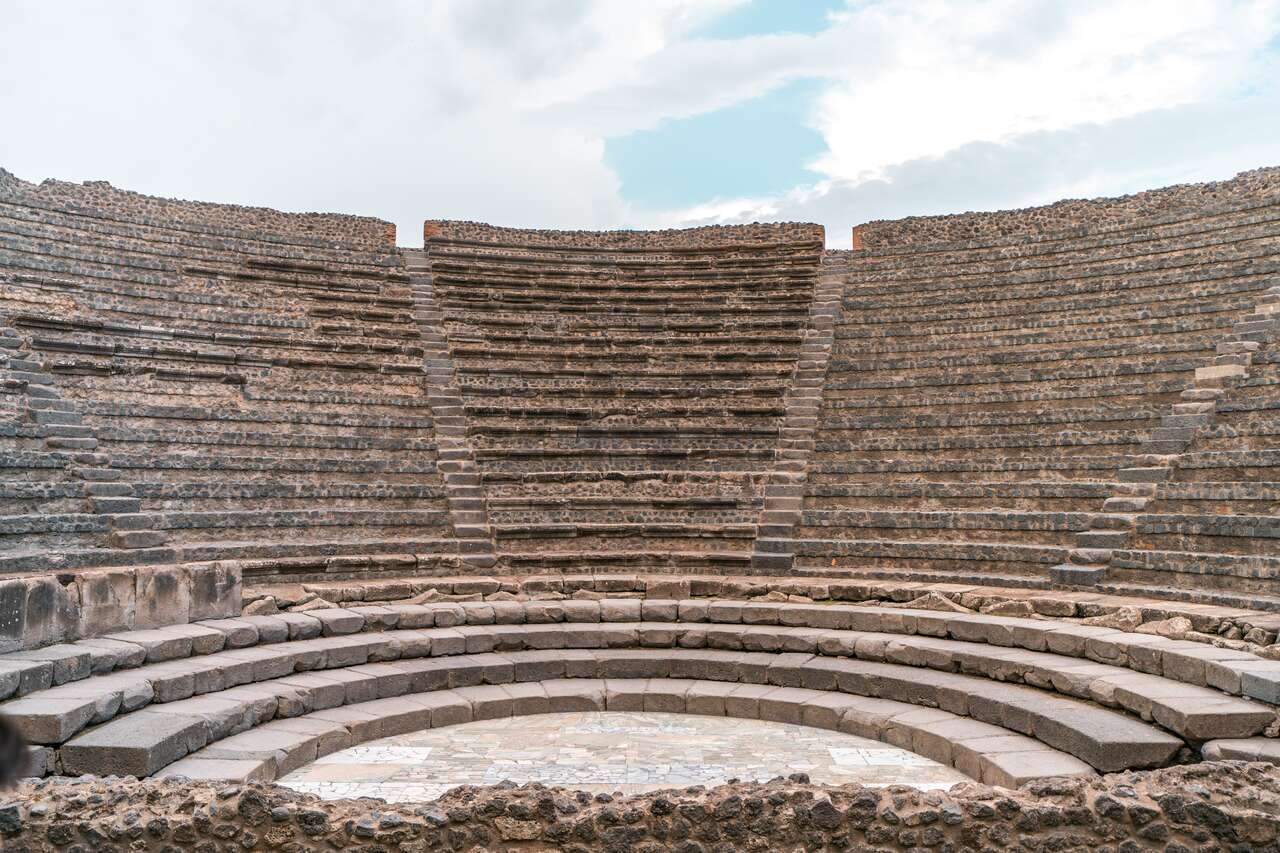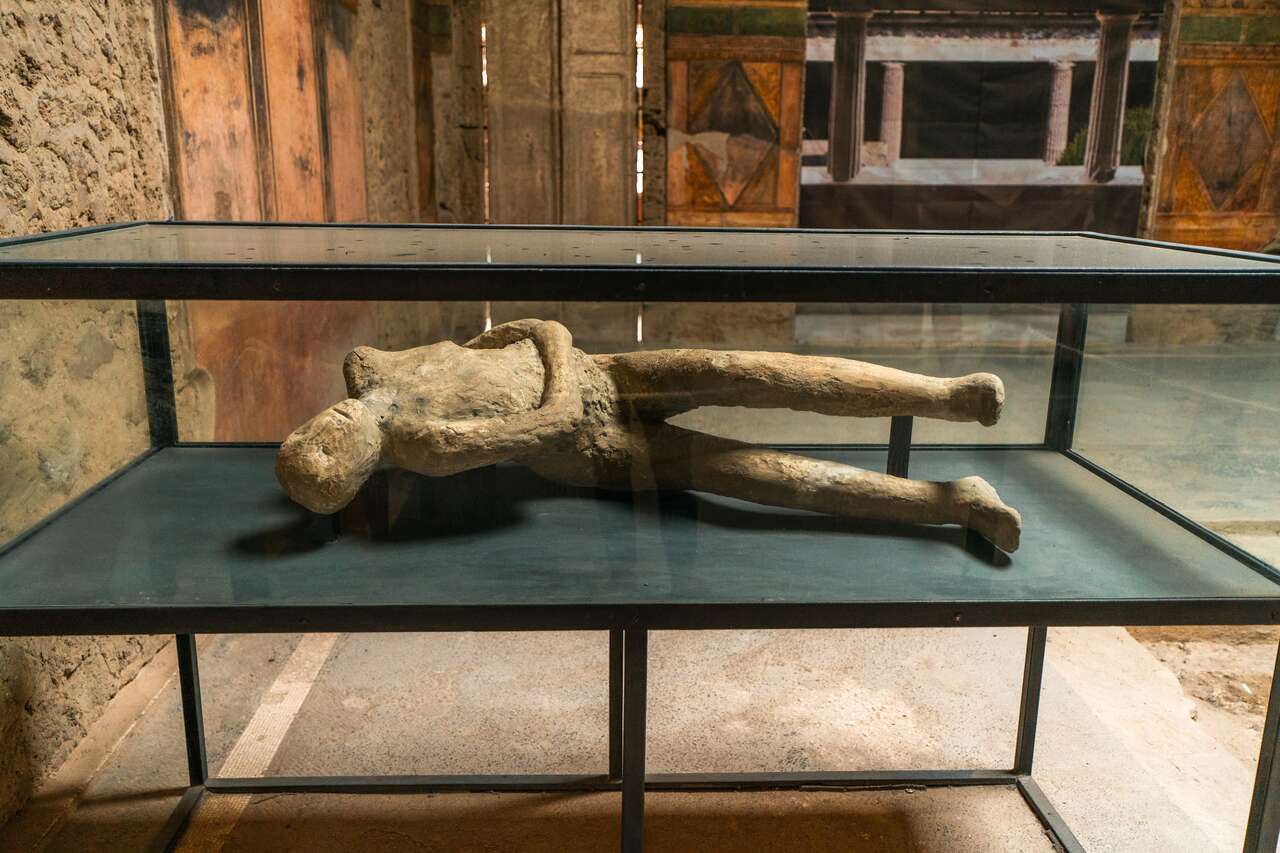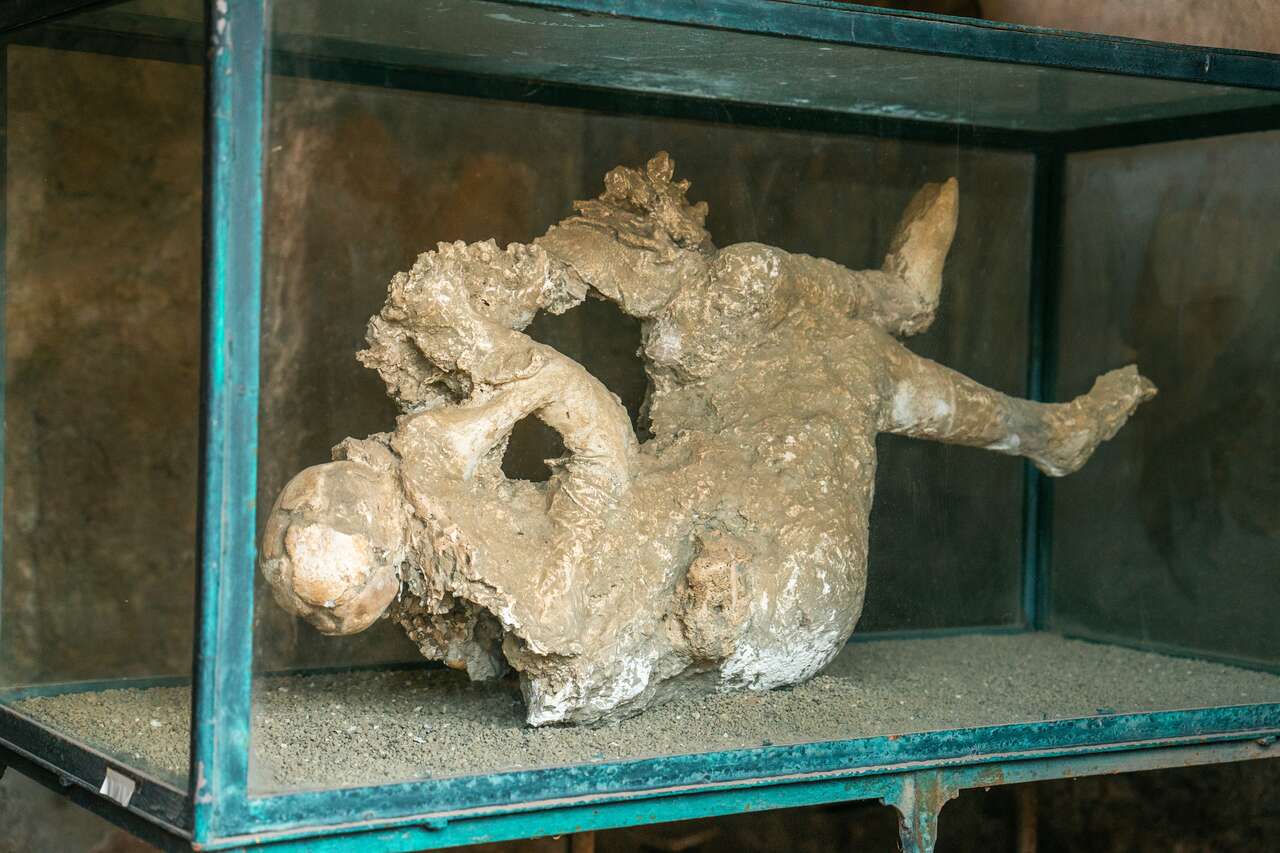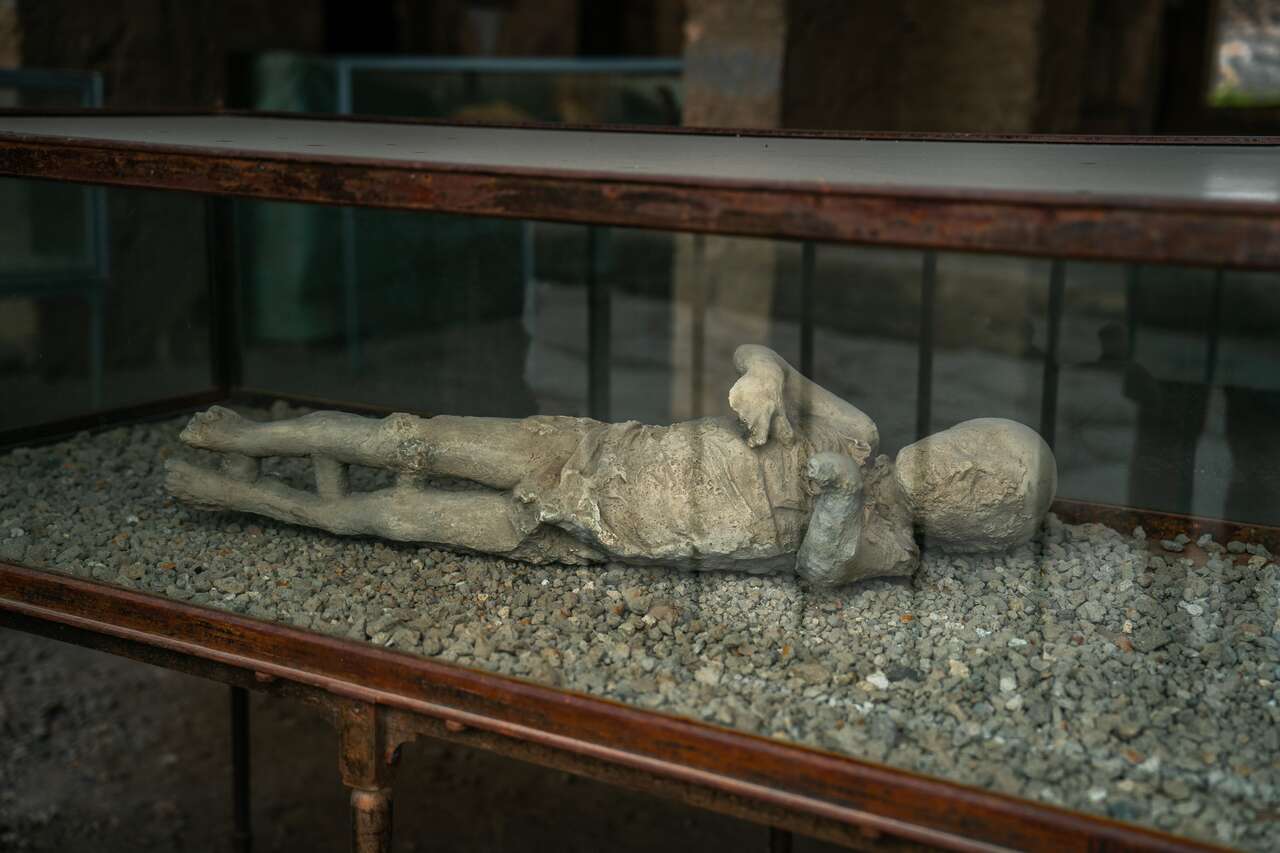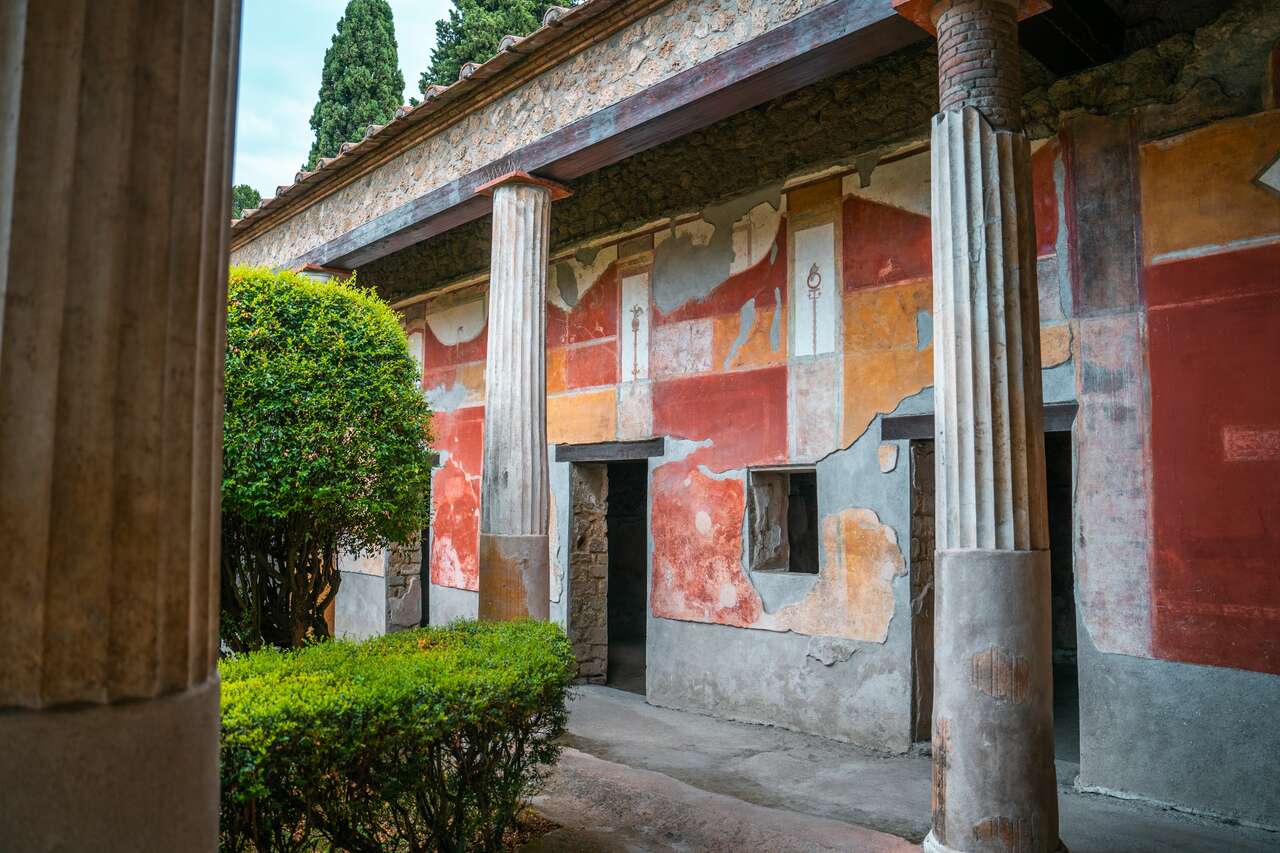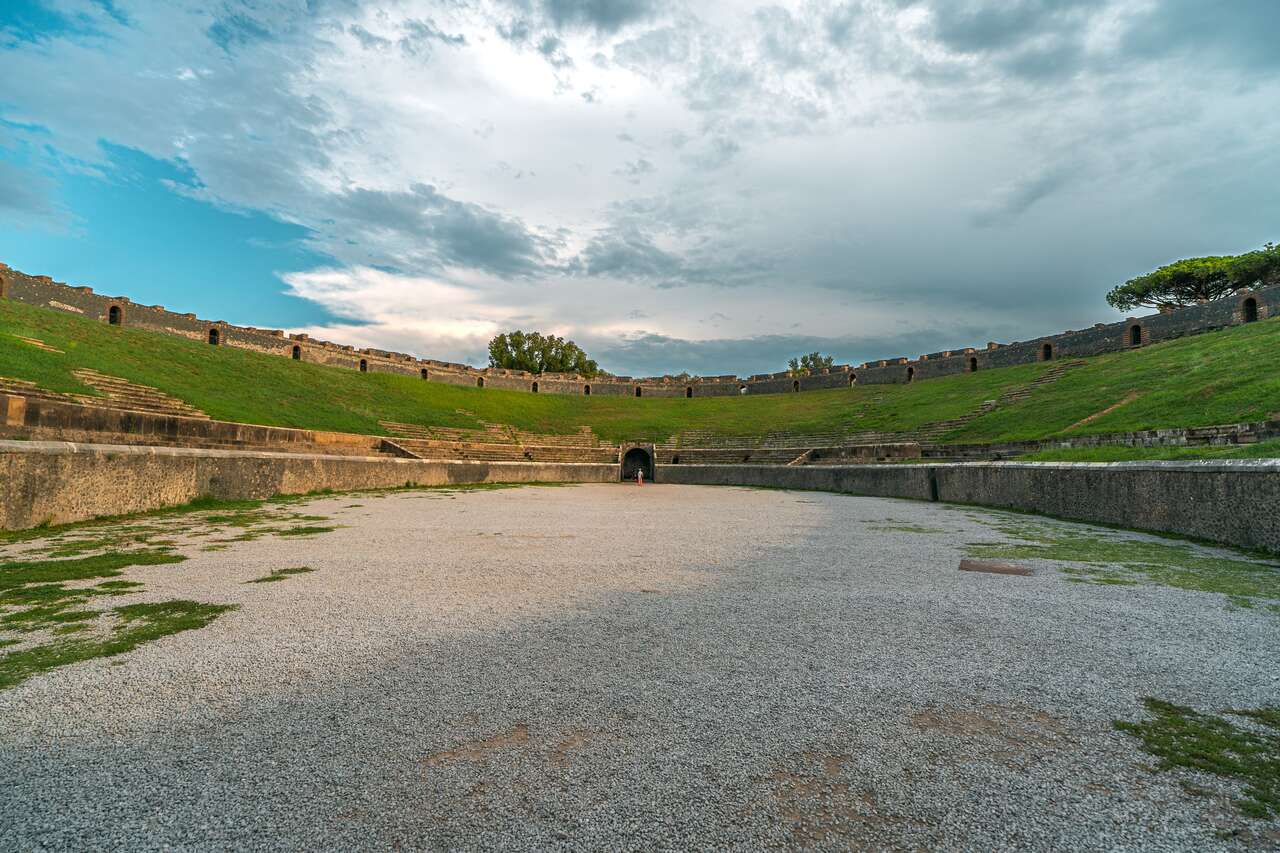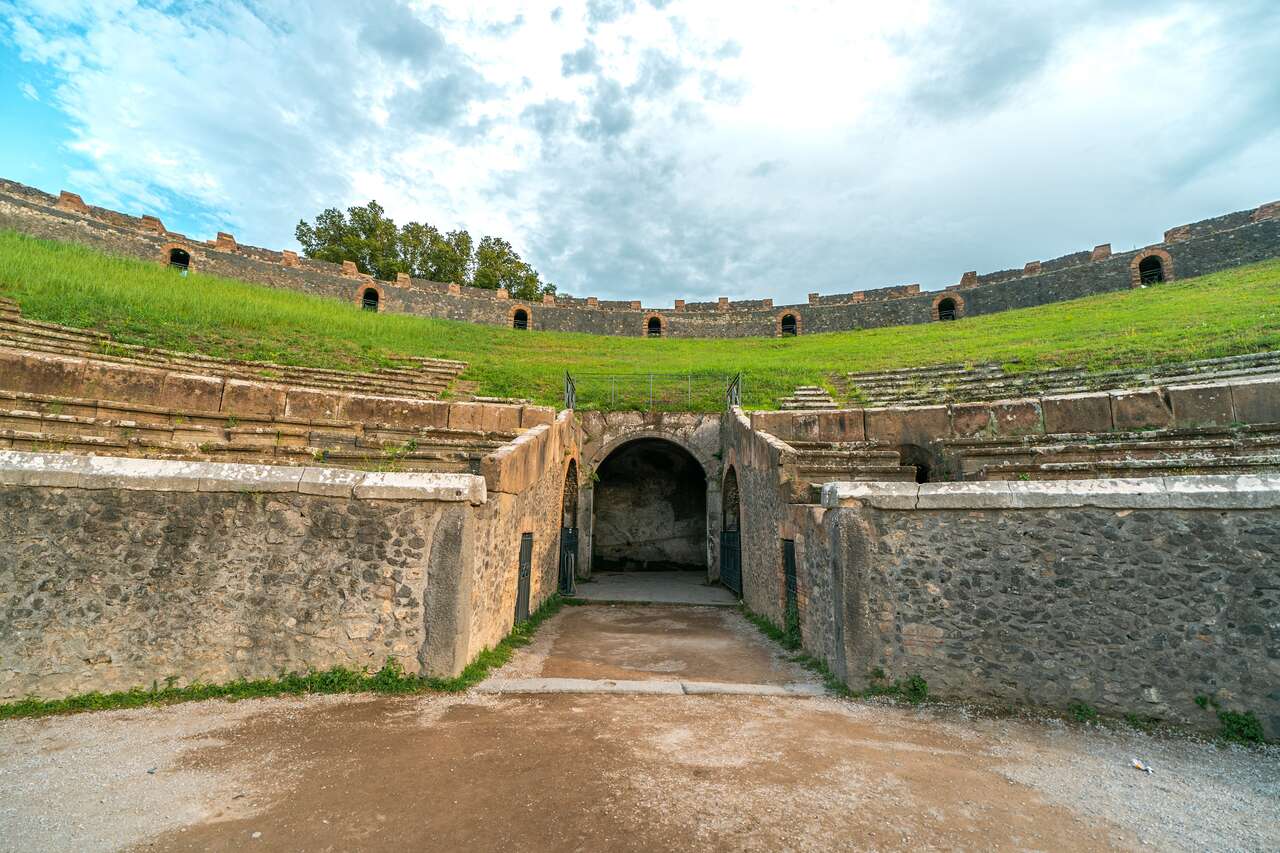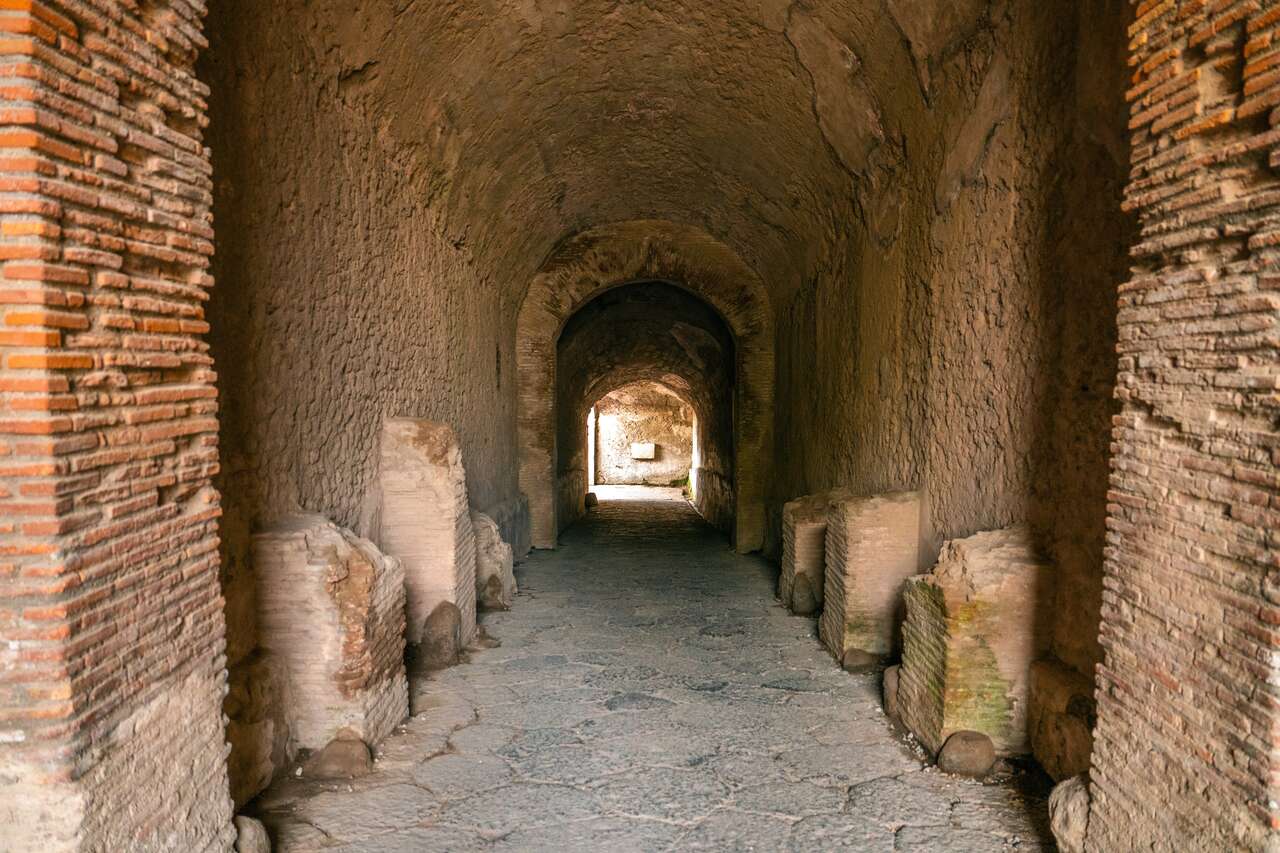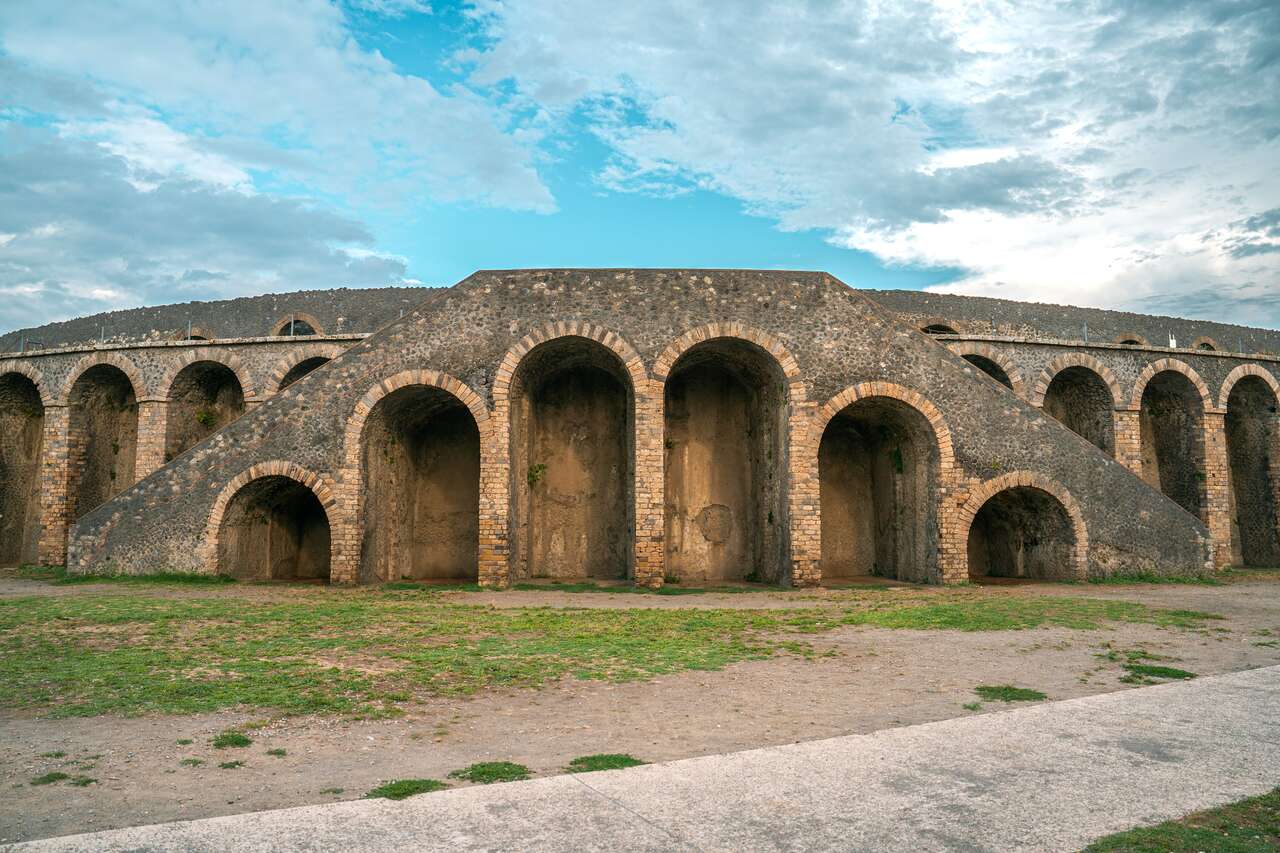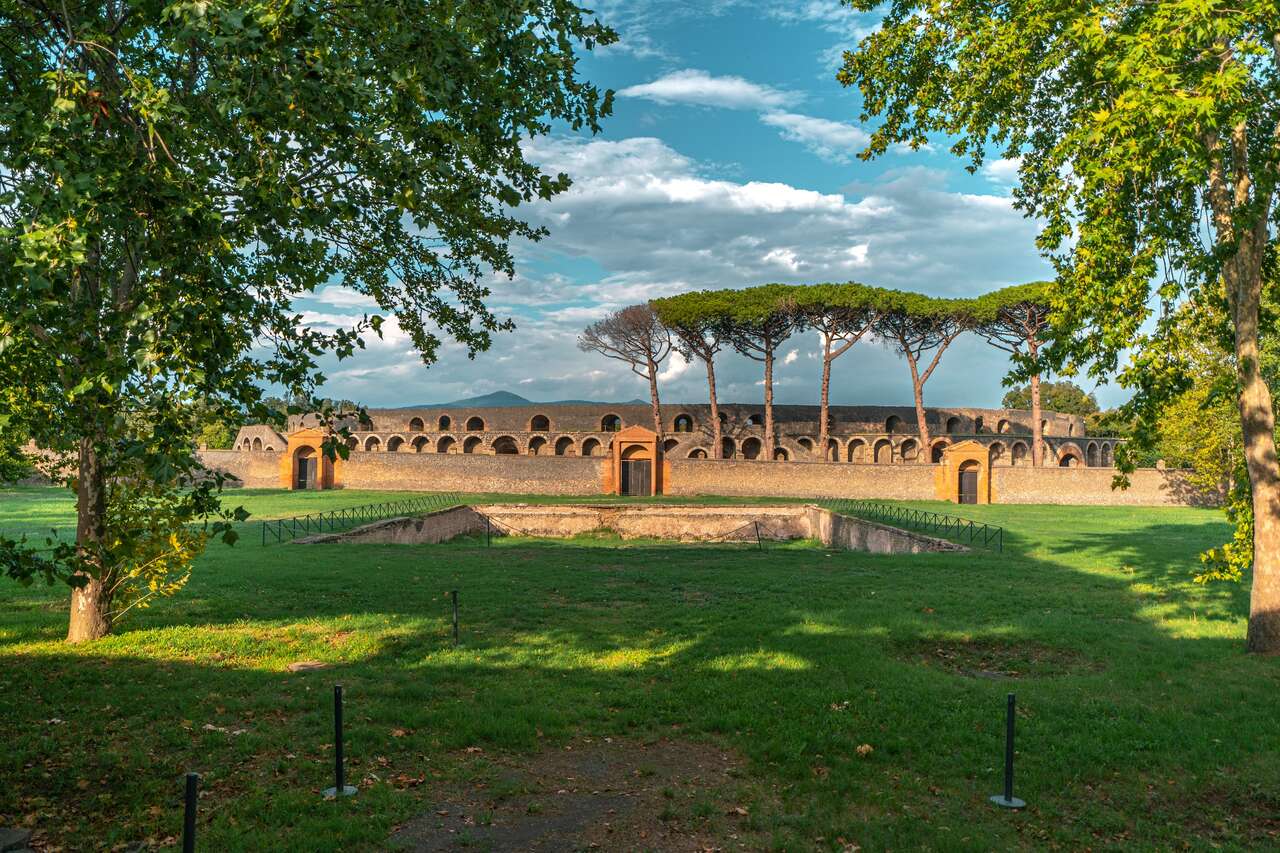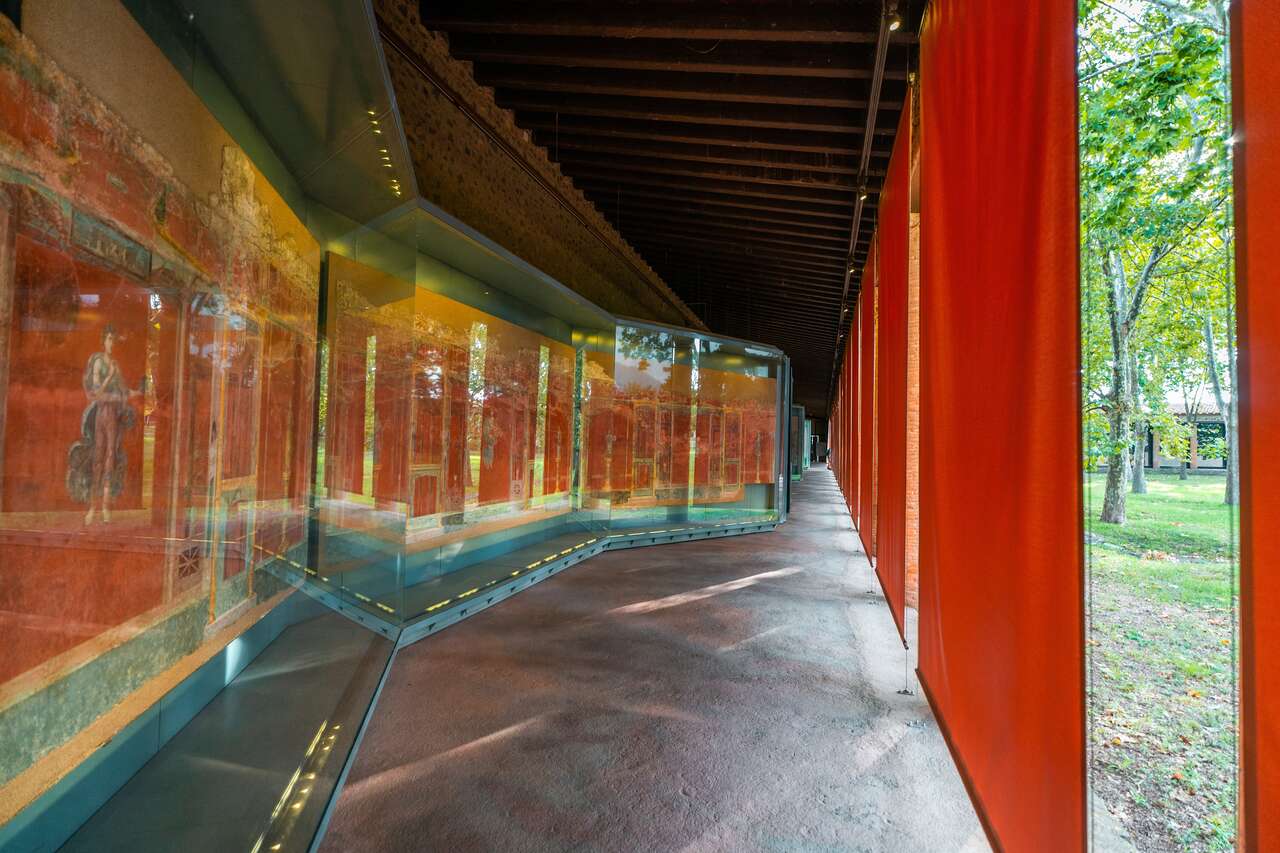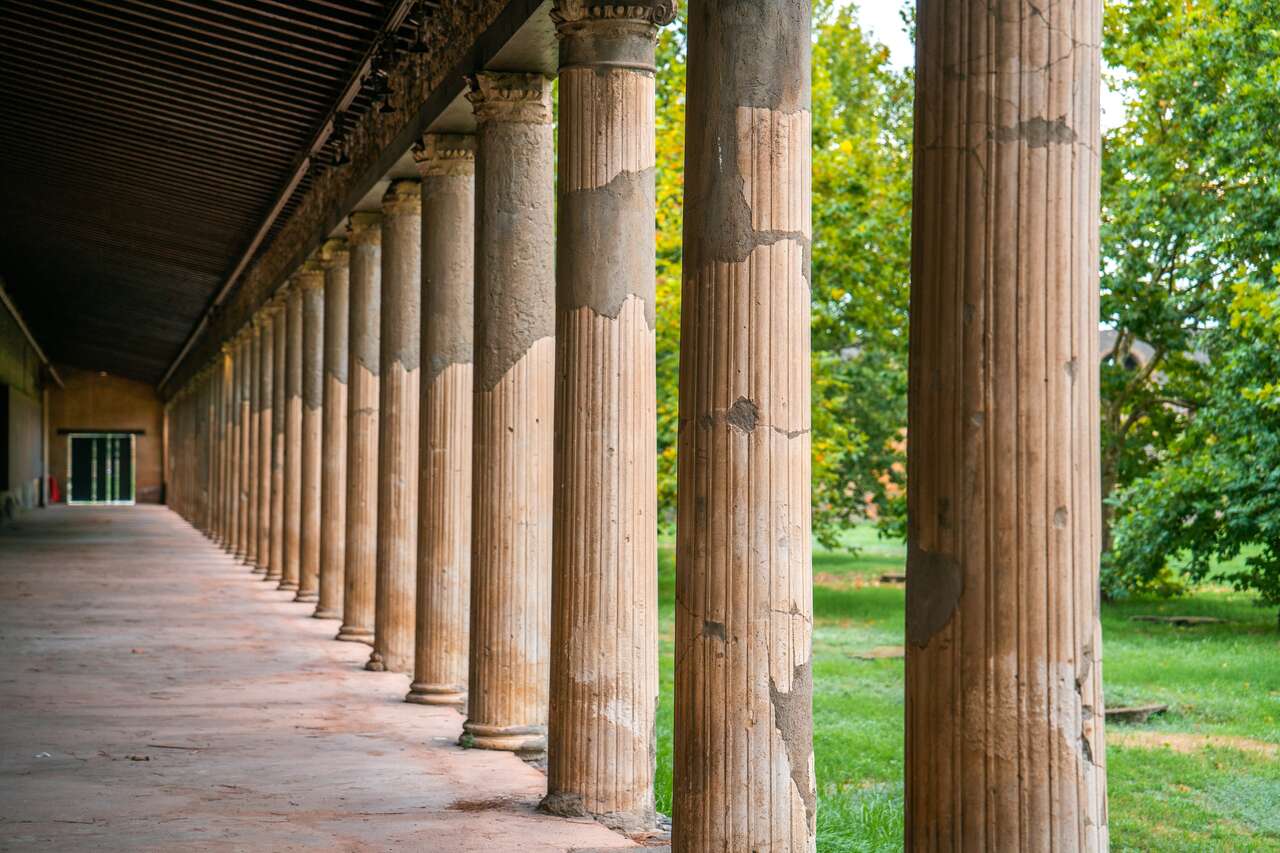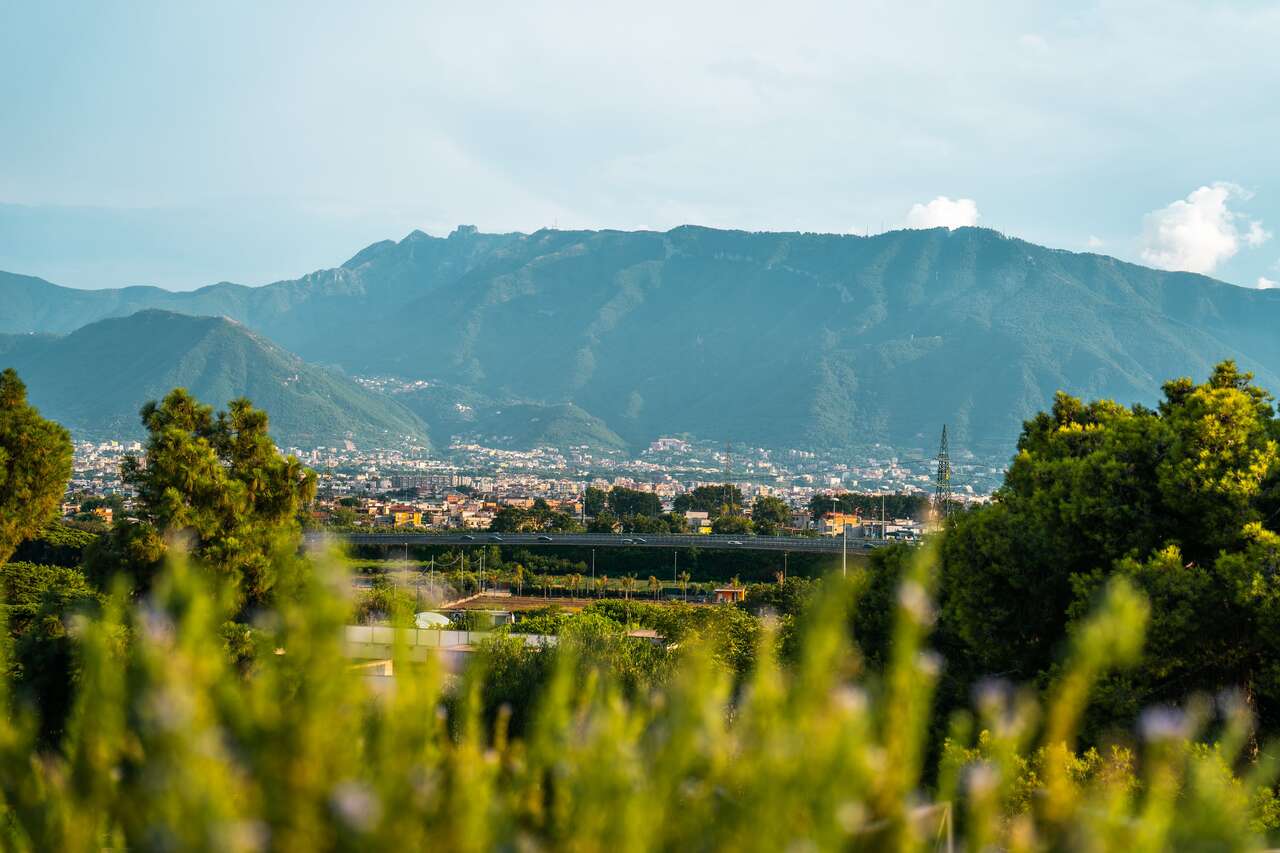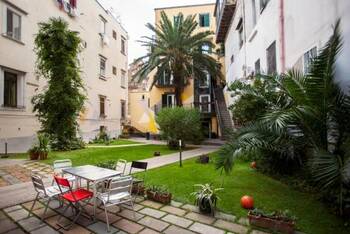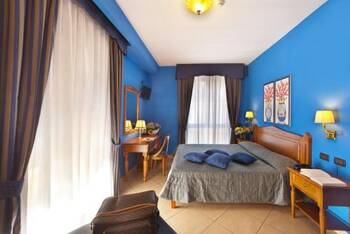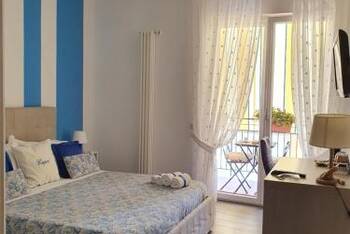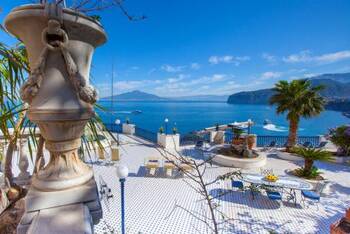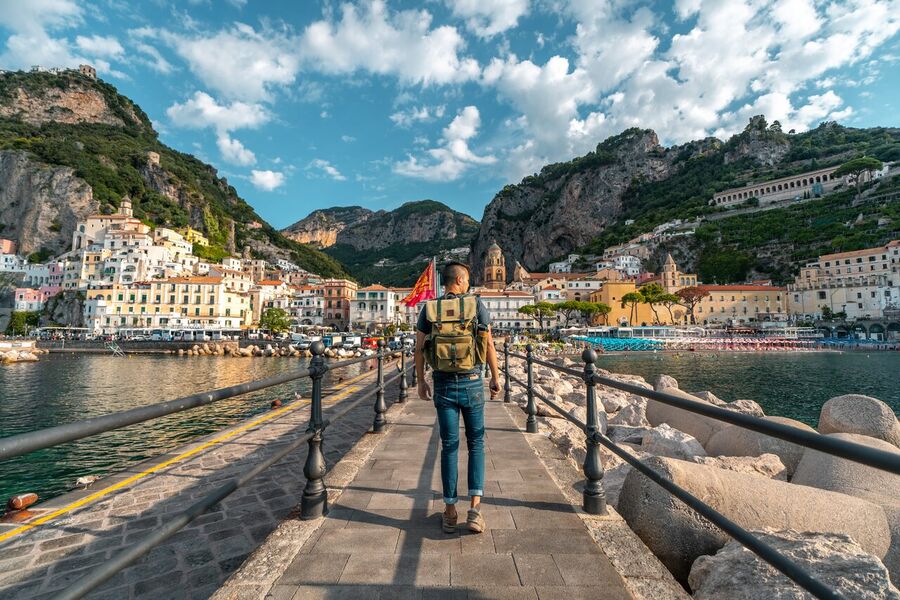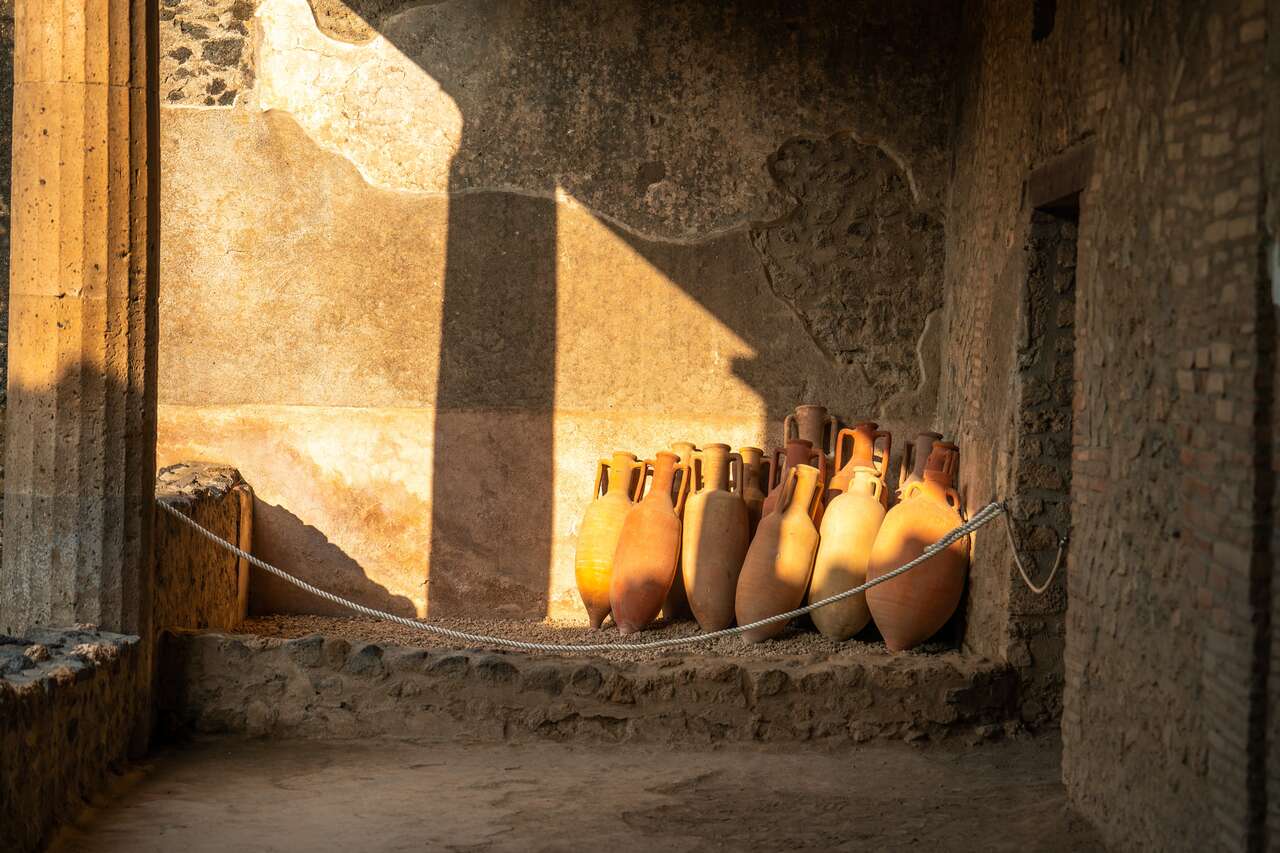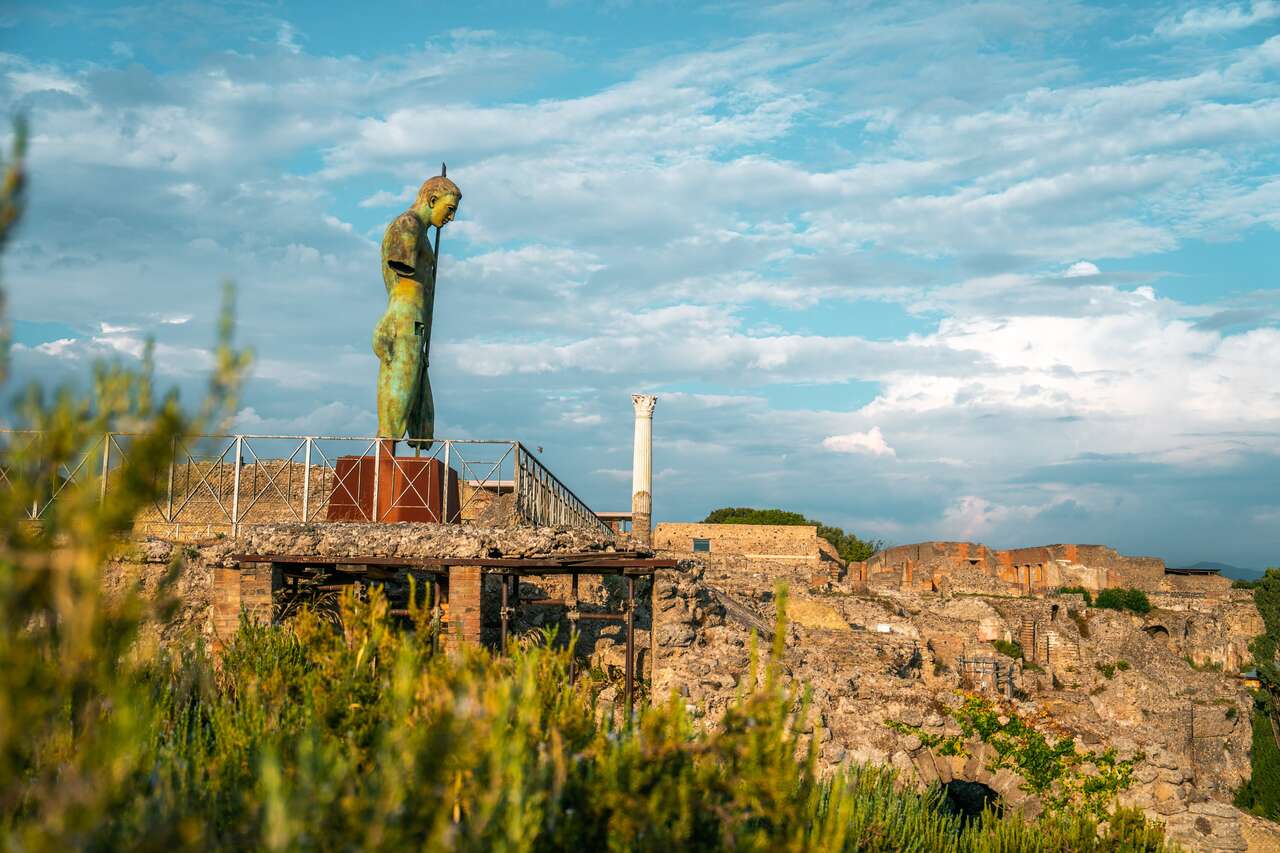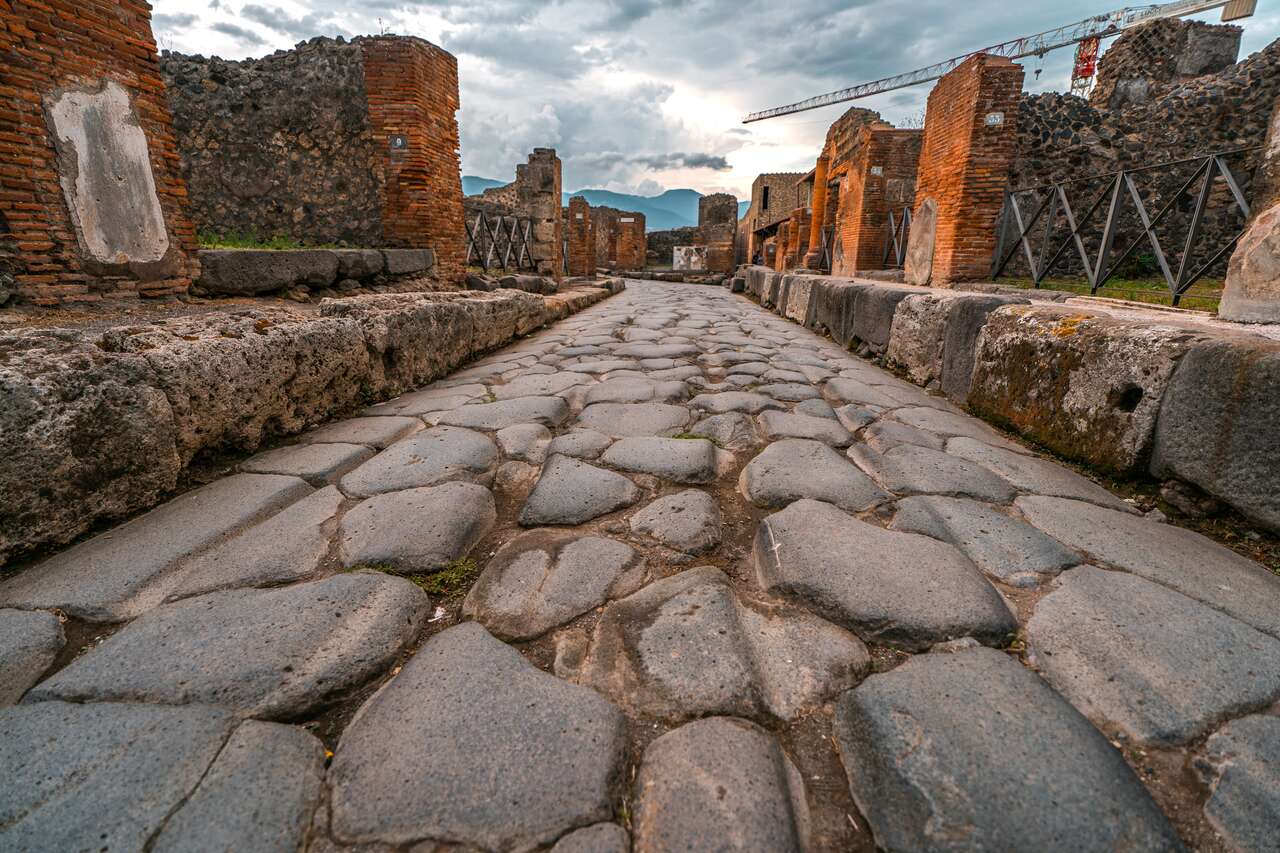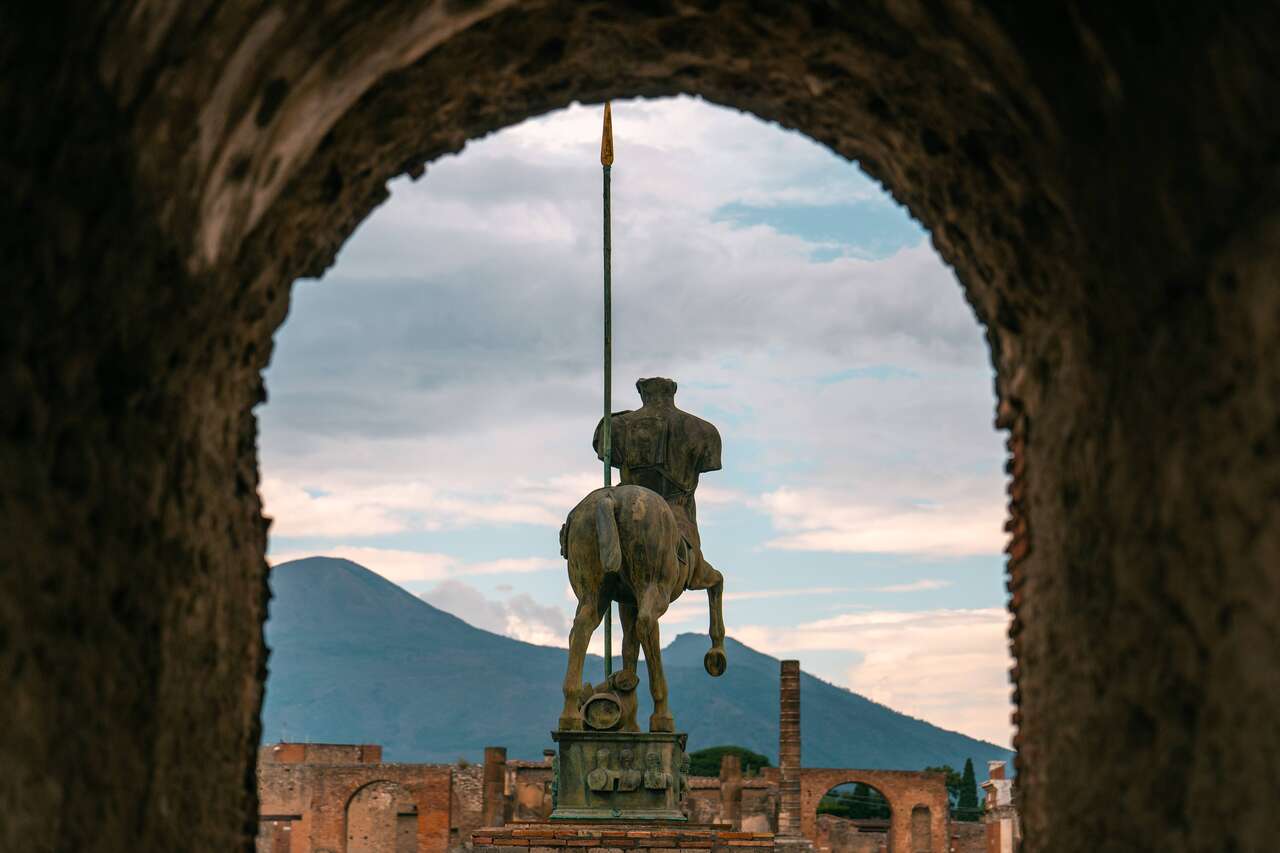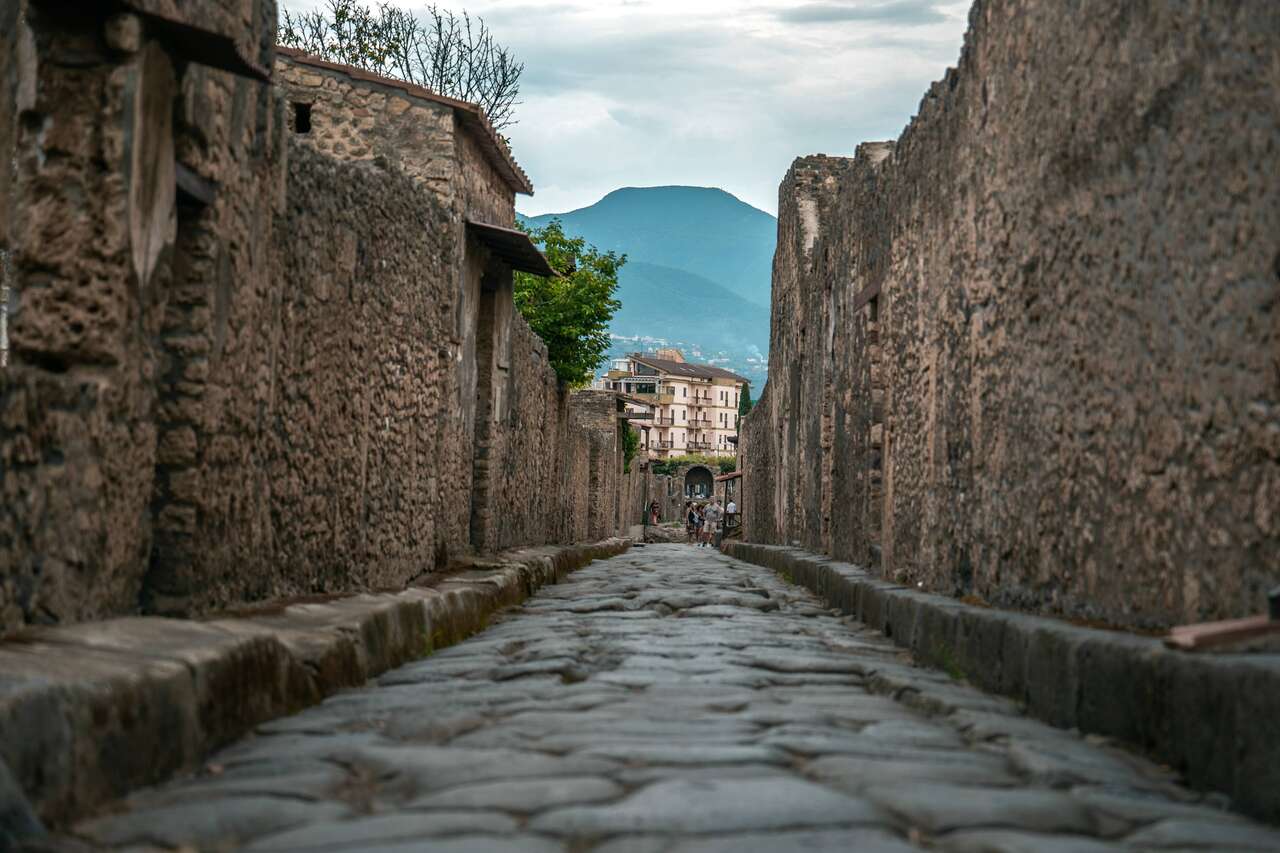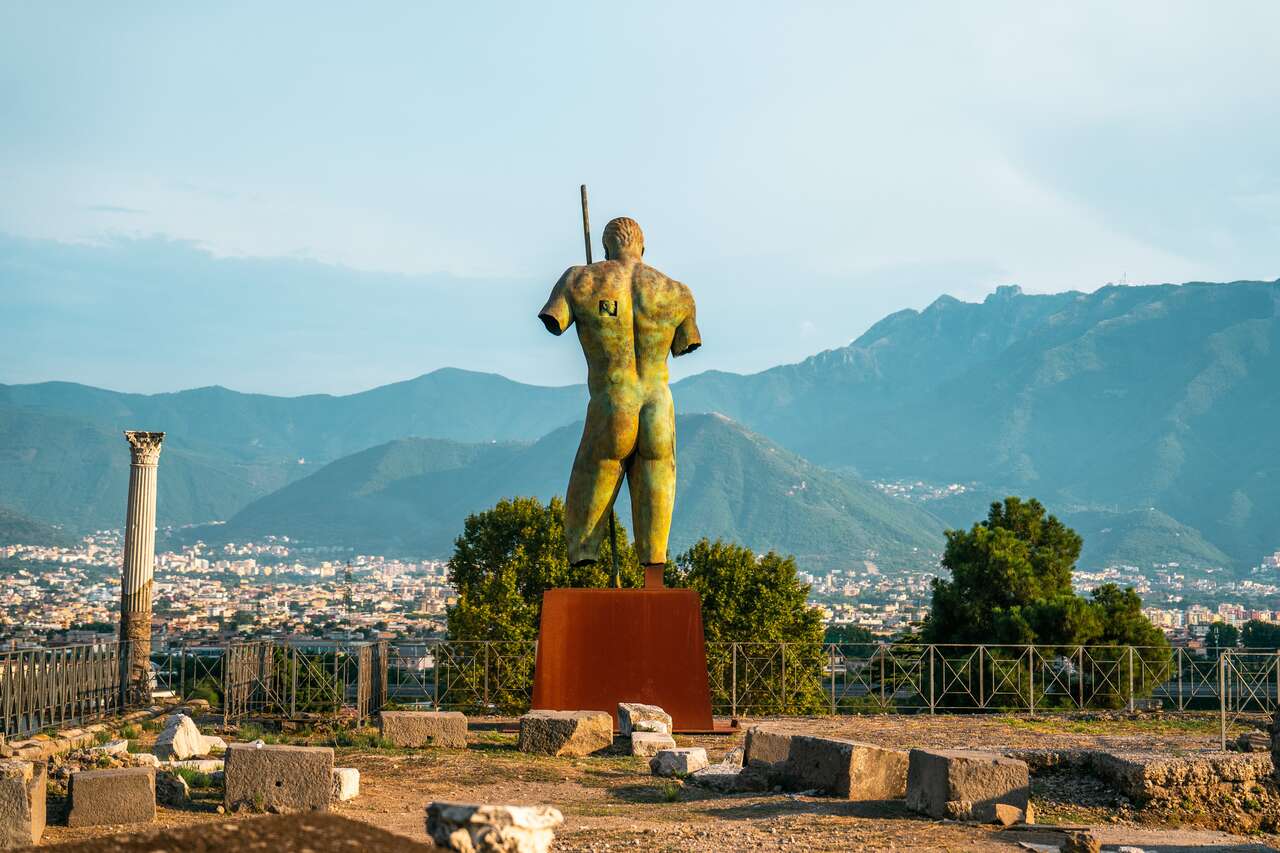Almost 2,000 years ago, Pompeii, an ancient Roman city located in modern-day Italy near the city of Naples, was almost wiped off the face of the planet when Mount Vesuvius erupted and buried the bustling city under meters of ash and pumice.
The city remained buried and largely forgotten for centuries, until its rediscovery in the 18th century and ever since then, the place has been one of the most fascinating sights to visit in the world.
After all, Pompeii is the only archaeological site in the world that provides a complete picture of what an ancient Roman city was like and how the people of Pompeii lived, thanks to the ashes that descend upon over the entire city, preserving its content through centuries.
Within this travel guide, I will show you all the best places and highlights of Pompeii as well as all the information you need to plan a great trip there. Without further ado, here is a complete guide to backpacking Pompeii. Let's get packing!
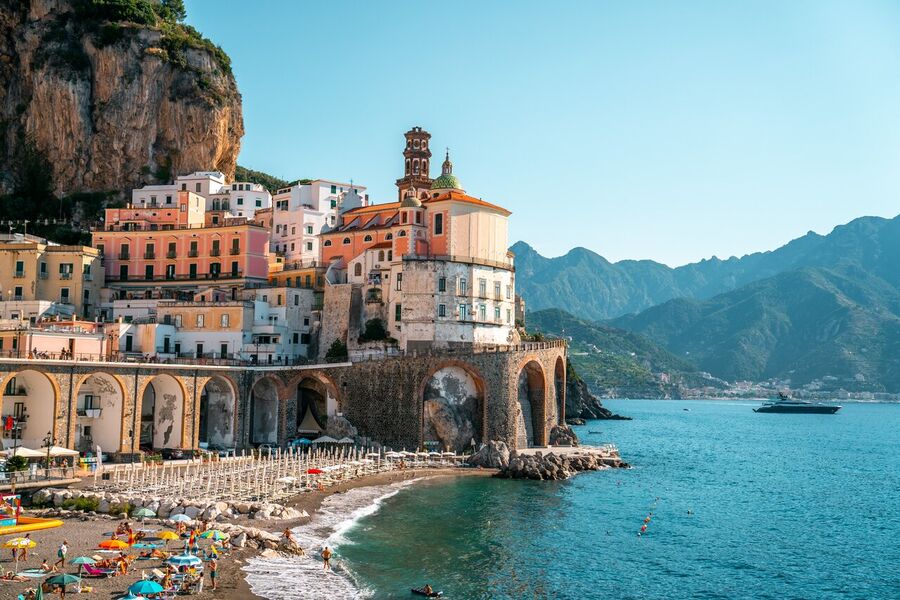
- Pompeii Itinerary Map
- 10 Best Places to Visit in Pompeii
- More Pompeii Activities
- Where to Stay Near Pompeii?
- When to Visit Pompeii?
- How Long to Spend in Pompeii?
- How to Get to Pompeii?
- How to Get Around Pompeii?
- Pompeii Tickets, Costs, and Discounts
- Pompeii Opening Hours
- What to Pack for Pompeii?
- Further Reading for Central Italy
Pompeii Itinerary Map
10 Best Places to Visit in Pompeii
1. Pompeii Forum
If you are traveling by train from Sorrento or Naples to Pompeii, you will arrive at the archeological park from the western gate and one of the first things you will see as you enter Pompeii is Pompeii Forum.
This vast ancient public square was the heart of the political, economic, and social life of the people of Pompeii. Like with most Roman Forum, the square must have been surrounded by all sorts of important buildings like churches and government offices.
This is also where you will come face to face with the mighty volcano, Mount Vesuvius, towering the entire area subtlely in the background, a great reminder of how powerful mother nature is.
- Pompeii: Entry Ticket and Guided Tour with an Archaeologist (2 hours) 🏅 Top Pick
- From Rome: Pompeii, Amalfi Coast and Positano Day Trip (13 hours)
- Pompeii: Small-Group Tour with an Archeologist (2 hours)
While you are at the Forum, be sure to check out the massive bronze centaur statue of Igor Mitoraj, a partially incomplete statue of the mystical beast of Centaur, ready for battle. This is one of the most recognizable landmarks in the park so be sure to drop by there before you continue exploring Pompeii.
2. Sanctuary of Apollo
Not too far from the Pompeii Forum, you will also find the Sanctuary of Apollo, the remains of an Apollo temple with iconic columns still left standing since it was constructed in the 6th Century BC.
Around the temple, you will find all sorts of statues left in eerie positions, almost as if they were frozen in time just like the people of Pompeii that were buried alive here within this city.
Within the temple, you will find a set of columns that can be used to perfectly frame Mount Vesuvius which is looming in the background, a great photo spot for photographers out there. Be sure to spend some time and explore the temple ground thoroughly before we move on to our next destination.
3. Villa dei Misteri
Once you are done with the Sanctuary of Apollo, continue up north all the way to Villa dei Misteri, one of the most well-preserved villas you will find in Pompeii.
Pompeii was a prosperous city of over 11,000 people and the existence of Villa dei Misteri is living proof that some of the people living there were extremely wealthy.
This 2nd Century BC Roman villa is one of the most beautiful villas in Pompeii and it is known for its well-preserved and richly decorated colorful frescoes that are still left pretty much intact to this day.
The frescoes really show just how impressive the craftsmanship of the Roman people were. To think that they were able to create such colorful and intricately frescoes more than 2,000 years ago is still mind-blowing for me. They really were the master builders of their time.
The walk to the villa is also rather beautiful with vegetation everywhere which is a nice change from the barren stone streets of Pompeii. The villa is open from 9 AM - 5 PM so be sure to get there before the closing time.
4. House of the Faun
A few minutes' walk, just southeast of Villa dei Misteri, you will find House of the Faun, one of the most famous and well-preserved houses in Pompeii and it is considered to be one of the grandest and most opulent houses in the city.
The house was built in the 2nd Century BC and it is believed to have been home to a wealthy merchant with an area that covered more than 3,000 square meters.
The house features intricate mosaics, frescoes, and sculptures, as well as a large peristyle garden and an impressive atrium. You can also see a replica of the famous bronze statue of the faun, where the house got its name from, in the entrance hall.
The house also featured an extensive library, which contained over 1,800 papyrus scrolls, many of which were preserved by the ash and pumice from the eruption of Mount Vesuvius in AD 79.
The House of the Faun offers an unparalleled look into the luxurious lifestyle of the elite in ancient Pompeii so be sure to drop by here while you are in Pompeii.
5. House of the Vettii
Next to the House of Faun, you will find the House of the Vettii, another well-preserved Roman house built in the 1st century BC, covering an area of more than 1,300 square meters.
The house features an elaborate entrance, an atrium with a central impluvium, a peristyle garden, a triclinium, as well as several other rooms. One of my favorite features of the house is the walls that are adorned with frescoes depicting scenes of daily life, mythological figures, and landscapes.
The house also features intricate mosaics and sculptures, as well as an impressive collection of household objects, including lamps, vases, and kitchenware, which provide us with a glimpse of what the daily life of the ancient Pompeians were like back in the day.
Walking through the villa is like walking through a time capsule where the daily lives of the people who were born over 2000 years ago are paused in time. The whole experience is crazy surreal and I highly recommend you check it out while you are in Pompeii.
6. Teatro Grande
Teatro Grande, also known as the Great Theater of Pompeii, is one of the first large structures you will visit in Pompeii. This ancient Roman theater was built in the 2nd century BC and is believed to have had a capacity of more than 5,000 spectators. How they were able to build this 2,000+ years ago is beyond me.
The Teatro Grande is one of the most well-preserved ancient theaters in the world and it is believed to be primarily used for drama performances and also served as a venue for musical and gladiatorial contests.
It features a large semicircular auditorium with a stage and a backdrop you can walk around in, as well as an orchestra pit, and several levels of seating.
The seating is arranged in the traditional Roman style, with the highest level reserved for the elite and the lower levels for the general public.
The place is a great example of a well-preserved Roman theater that offers a unique glimpse into the entertainment and cultural life of the ancient Romans so be sure to drop by here while you are in Pompeii.
7. Garden of the Fugitives
Now, it's time to visit the true highlight of Pompeii. I know you have been waiting to see the casted bodies of the Pompeians for so long and there is no better place to see them than at the Garden of the Fugitives.
Garden of the Fugitives, also known as the Garden of the Skeletons, is an excavation area named after the plaster casts of the victims who were buried alive here by the eruption of Mount Vesuvius.
Due to the layers of ash and pumice covering the city after the eruption, the victim's bodies were preserved for years before it rotted away over time, and later, excavators found the victims and made plaster casts of the voids left by their bodies, creating a poignant and eerie display of the very last moments of their lives.
The garden features around 13 plaster casts of victims, including men, women, and children, who were trying to escape the eruption. The casts are arranged in a small garden, surrounded by greenery, a contrast to the eerie display of the casts of bodies nearby. If you want to see these casts of bodies, be sure to drop by the Garden of the Fugitives while you are in Pompeii.
8. House of Venus in the Shell
House of Venus in the Shell is another of my favorite Roman houses in Pompeii, known for its beautiful fresco of Venus, the Roman goddess of love, rising from a shell.
The fresco of Venus, which is where the house got its name from, is also considered to be one of the most beautiful and well-preserved frescoes in Pompeii with the shape and colors pretty much intact and it is a must-see for those who are interested in history and art.
The house also features an entrance atrium, a peristyle garden, a triclinium, and several other rooms surrounded by walls adorned with frescoes depicting scenes of daily life, mythological figures, and landscapes.
As you explore Pompeii, be sure to drop by the House of Venus in the Shell and check out its beautiful fresco. The house has a weird opening hour starting from 1:45 PM to 7:30 PM every day so be sure to align your visit carefully.
9. Amphitheater of Pompeii
One of the largest structures in Pompeii, the Amphitheater of Pompeii located on the eastern part of the park, was built in the 2nd Century BC and it is considered to be the oldest and best-preserved amphitheaters in the Roman world.
The amphitheater can hold more than 8,000 spectators at once and it was often used for public spectacles like shows, events, and gladiatorial contests.
This impressive structure was built completely out of stone and brick, and it features a large elliptical arena surrounded by seating tiers. As with other theaters, the seating here was also divided into two sections, the lower section for the higher-class Roman citizens, and the upper section for the general public.
The amphitheater also featured an underground network of tunnels, called the hypogeum, where the gladiators, animals, and other performers were held before the show.
The moment you walk through one of these tunnels and into the arena, you can almost hear the uproar from spectators from the Roman time. Try to restrain yourself from screaming "Are you not entertained?" as you walk into the arena if possible, haha 😂.
10. Palestra Grande
Last but not least, we visit Palestra Grande or the great gymnasium of Pompeii, a large sports complex, now turned into an archeological museum you can walk around in and see some of the excavated artifacts discovered in Pompeii.
The complex is considered to be one of the best-preserved examples of Roman sports facilities that were used for training and physical education, as well as for hosting athletic competitions and other events.
The Palestra Grande covers an area of around 6,500 square meters and features a large central courtyard surrounded by several rooms that were used for various purposes related to sports like training rooms, changing rooms, and a heated room (laconicum) for warm-up exercises, all of which have been turned into a museum housing all sorts of cool artifacts and statues found here.
Spend some time here and walk around the sports complex as you pass through from one exhibition to another until you exit the museum. And that should be it for the highlights of Pompeii. If you want to dive even deeper into the history of these places in Pompeii, you can visit Pompei with this organized tour and you will be guided through the park with a real archeologist. How cool is that?
More Pompeii Activities
Looking to save some costs on your travel? Why not join a shared group tour from Pompeii? Here are some activities you might be interested in:
Where to Stay Near Pompeii?
Depending on what you plan to visit during your trip to Pompeii, there are several options you can choose as your base. Below are some suggestions you might like:
Accommodation in Naples
Naples is the largest city near Pompeii and it is likely a place you will be flying into from abroad. If you wish to explore a little bit of Naples as well, basing yourself out of here is not a bad idea at all. Accommodations here are cheaper and abundant while having more things for you to do as well. Below are some of my suggestions:
Accommodation in the Amalfi Coast
For those who are looking to explore the Amalfi Coast with Pompeii, you can also stay in Sorrento. It is the most centrally located base for Pompeii and Amalfi Coast as well as other attractions along the coastline of Central Italy like Capri. Below are some accommodation suggestions:
When to Visit Pompeii?
Italy can get pretty hot in the summer and so if you want the weather to be a little milder so that you can leisurely explore all the ruins of Pompeii while the tourist crowds are a little thinner, I highly recommend you visit during spring or Autumn from April to May and September to October respectively.
That said, the chance of clear days is also fewer during those periods unlike the summer months of June to August and so if you do not mind the heat and the crowds but you just want the weather to be nice out most of the time, visiting Pompeii during the summer months is also recommended.
How Long to Spend in Pompeii?
Expect to spend at least 3 - 4 hours and a ton of walking in Pompeii since the archeological park covers almost 44 hectares and all the highlights of Pompeii are spread out across the park. There is just no way around it so be sure to spare at least half a day to visit Pompeii.
If you are a little short on time and you want to see the highlights of Pompeii in under 3 hours, you can also go with an organized tour because I'm not gonna lie, I probably spent at least an hour trying to get my bearings and getting lost around the park 😂 and it would probably be much faster if you go around Pompeii with a guide.
How to Get to Pompeii?
Naples is the closest city with the largest travel hub in the area and you should be able to find direct flights from anywhere to its Naples International Airport (NAP) without problems.
From the US, there is one direct flight from New York to Naples offered by UNITED Airways that will take you straight to Naples in about 9 hours. You can browse through great direct flights from here.
From Europe, you have quite a lot more options here. You can either fly directly to Naples from places like the UK via Wizz Air/Ryanair/EasyJet, take a train from all the major train stations around Europe, or catch one of the many buses to Naples. Flixbus is highly recommended when it comes to bus travel in Europe.
From Asia, there is no direct flight from Asia but you should be able to find many transit flights that connect via middle east countries like Emirates via Dubai or Turkish Airlines via Istanbul. The journey should take approximately 15 hours.
To find a cheap flight to Naples, I would recommend you use Skyscanner or Expedia to look for the cheapest route and schedule so you can compare and pick the best one.
How to get from Naples Airport to your Accommodation in Naples?
Once you arrive at Naples International Airport, you can then take the Alibus from the airport bus terminal for 5 EUR per person and it will take you to Naples Central Station in about 20 minutes.
You can check the official schedule here and book a ticket online here. From Naples Central Station, all you have to do is find the closest metro station, hop on it, and be on your way to your accommodation.
How to get from Naples Airport to Sorrento?
For Sorrento, you are going to have to follow the same instructions I provided previously to get to Naples Central Station first and from there, you can then catch the L1 train to Sorrento.
Since the train is operated separately from Trenitalia, you are going to have to be there and buy the ticket at the train station. It should cost around 5 EUR per person and takes about 1 hour to reach Sorrento. You can use the same method but in reverse to go to Pompeii the next day as well.
How to Get Around Pompeii?
By walking: Of course, the only way to get around Pompeii is to walk and there is a ton of walking you have to do here so please prepare accordingly. Make sure you carry enough water and wear comfortable shoes for your Pompeii visit.
By tours: You can also get around Pompeii on an organized tour where the local guide will help you navigate the massive park and visit all the highlights without wasting time getting lost in the crisscrossing streets of Pompeii.
With organized tours, you will also be able to visit other areas as well like Herculaneum which some claimed to be even more well-preserved than Pompeii as well as Mout Vesuvius, the volcano that started it all. Below are some of the tours you might wanna join:
- From Pompeii: Small-Group Tour with an Archaeologist
- From Pompeii: Small-Group Pompeii and Herculaneum Tour
- From Sorrento: Pompeii & Herculaneum Tour with Skip-the-Line
- From Sorrento: Day Tour to Pompeii Ruins and Mount Vesuvius.
Pompeii Tickets, Costs, and Discounts
Pompeii ticket costs around 18 EUR for an adult, 2 EUR reduced price for EU citizens between the ages of 18 and under 25, and it is valid for 24 hours.
Every first Sunday of the month, every visitor will get free entry to Pompeii, but in order to prevent overcrowding, should the number of visitors exceed 15,000 by 12 PM, the ticket offices will close for an hour so be sure to go there early.
Pompeii Opening Hours
The opening hours from 1st April to 31st October are between 9 AM and 9 PM with the last admission at 5:30 PM every day while during the off-season between 1st November and 31st March, the park is open from 9 AM to 5 PM with the last admission at 3:30 PM every day.
What to Pack for Pompeii?
As you may already know, I am an advocate of light traveling, and indeed, packing light for a journey like this is a unique art form. Here are some packing tips for your upcoming trip to Pompeii, Italy:
- Walking/Hiking Shoes: With all the walking and possible hiking during your travel, a comfortable pair of shoes is a must. I recommend the Timberland 3-Eye Classic Boat Shoes that are my go-to pair for long strolls and hikes.
- Breathable Shirts: Given the potential for hot weather, pack a few breathable shirts for your outdoor adventures.
- Shorts/Jeans: Anticipate lots of walking during your travels? Be sure to pack some breathable shorts and a pair of Levi's jeans for when the weather cools. For women, leggings are excellent for both hot and cold climates, so consider packing some as well.
- Outer Shell Jacket: An outer shell jacket is great for windy or rainy conditions. I highly recommend the Columbia Watertight Jacket (for women). It's lightweight, breathable, and even comes in a cool orange color.
- Microfiber Towel: A Microfiber towel is the ideal backpacker's towel due to its lightness, quick drying, and compressibility.
- Swim Suits: A swim trunk is a must-pack item if you are planning to visit Pompeii, Italy in the summer, just in case there is a body of water you can jump in.
- Camera: You should also pack a good camera for your trip so that you can capture all the beautiful experiences you might have. I recommend the Sony a7R V camera together with the Sony 24-70mm f2.8 GM II lens, which is probably the highest-performance camera and lens combination you can get right now.
- Power Bank: Keep your electronics charged on the go with a 20,000+ mAh Power Bank.
- Water Bottle: The Hydro Flask Trail Water Bottle is a great insulated water bottle to have with you in cities or on hiking trails. It is lightweight and can keep your water cold or warm for more than 12 hours. It's a total game-changer.
- Universal Adapter: You'll need just one universal adapter to plug in your electronics in any country you visit.
- Packing Cubes: Packing Cubes will help you save space in your backpack and keep all your belongings organized.
- Daypack: The Langly Alpha Globetrotter is my go-to everyday camera backpack. It's large enough to carry all my travel gear, and it comes with plenty of slots and pouches. Plus, it's stylish as hell!
- Large Backpack: You will need a large backpack to carry all of your stuff. I recommend the Osprey Atmos AG 65L backpack. With excellent weight distribution and a lifetime guarantee, you can't go wrong with Osprey.
For more information on what I pack in my backpack for this trip, check out: My Packing List: 60 Travel Essentials.
Now that we have all the information we need, it's time to start planning your trip! Here are some resources to help you get going:
Are you planning to travel independently? Be sure to check out my guide on How To Plan A Backpacking Trip here.
Further Reading for Central Italy
I hope you found this Italy travel guide useful. If you want to read more about Italy, here is a selection of articles you might like:
- First time visiting Italy? Here are the 15 Best Places to Visit in Italy.
- Want to see the highlights of Italy in 2 weeks? Be sure to check out our 2-Week Backpacking Italy Itinerary.
- Want to travel around Italy for one month, from the Dolomites in the north to Sicily in the south? You're going to love this backpacking itinerary packed with information: One Month Backpacking Italy Itinerary
- For a complete 7-day backpacking itinerary in Central Italy that will take you from Rome to Pompeii to the Amalfi Coast, be sure to check out: 7 Days Backpacking Italy Itinerary.
- Rome needs no introduction from me. From well-trodden attractions like the Colosseum to hidden gem spots like the Appian Way, here are the 20 Best Things to Do in Rome you shouldn't miss!
- Wondering what you can do in Rome in 3 days? Check out our 3-day Backpacking Rome Itinerary.
- Do not forget to visit the smallest city-state in the world, the Vatican City, while you are in Rome. Here are the 8 Best Things to do in the Vatican City.
- If you are looking for a place near Rome with beautiful coasts, charming towns, and beaches to relax in, you can't go wrong with the Amalfi Coast. Here is The Ultimate Backpacking Guide to the Amalfi Coast.
- Looking for a complete itinerary for Northern Italy? Check out: 2-Weeks Backpacking Northern Italy Itinerary.
- Not convinced by my words? Here are 125 photos that will inspire you to visit Europe.
- To see all the articles about Italy, visit the Italy Travel Guide page.
- Traveling in Europe can be cheap, really cheap. These are the 12 Cheap European Countries to Visit.
- Looking for more travel guides for Europe? You can find more on my Europe Travel Guide page.
- Or if you want something more specific to the region, visit our Southern Europe Travel Guide, Western Europe Travel Guide, or Central Europe Travel Guide pages.
- For more of my travel guides like this, visit my Destinations page.
Disclosure: This post may contain affiliate links.

